
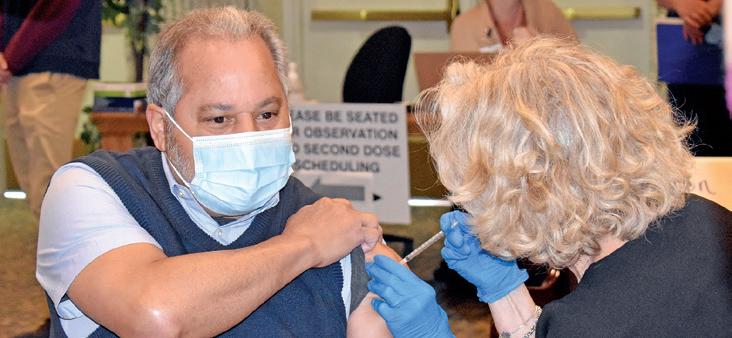





By Sophie Hurwitz Of the St. Louis American
n Sumner will not be without obstacles, despite these community collaborations: its current enrollment is down to 225 from a peak of over 2,000 decades ago, and proficiency rates on standardized tests in reading and math among those students are low.
Ever since the historic Sumner High School was slated for closure in late 2020, community members have been rallying to save it. In Tuesday night’s St. Louis Public Schools Board of Education meeting, a motion was unanimously passed to move towards that goal by re-conceptualizing the school as an “arts and activism” focused institution. Local arts organizations 4TheVille, the St. Louis Shakespeare Festival, The Black Rep, and the Center for Creative Arts(COCA) will be providing arts related enrichment programming to the students at Sumner starting in the fall. In addition to 4theVille and the Shakespeare Festival, the Sumner Recovery Plan proposal was drafted and submitted by three alumni groups led by Jacqueline Vanderford (Sumner High School class of ’63), Michael Blackshear (class of ’77) and Dr. Robert L. Salter (class of ’68), respectively.
“Sumner is one of the most important historic institutions in the State of Missouri. Its legacy transcends any neighborhood, school district, or municipality. Its vitality depends greatly on how we as a region decide to come together and nurture the institution,” said Aaron Williams of 4theVille upon submitting the proposal. “In 1907, the Colored Citizens of St. Louis made it clear that the institu-

Sumner alumni Ronald Gregory ‘57 and brother of comedian and activist Dick Gregory, speaks at the SOS - Save Our Sumner event on Sunday, Feb. 28.
tion of Sumner High School should be the standard bearer of how we prepare our next generation. Our effort is a continuation of that spirit. This opportunity has the potential to welcome a new standard for our education system.”
The plan will begin as a three-year trial
run, during which four new student pathways will be provided: Music, Dance, Art, and Activism. During that time, in order to remain open, the school must increase enrollment by 10% annually by building more engaging pro-
Wants radical love and compassion to replace a system that prioritizes incarceration and punishment
By Dana Rieck Of The St. Louis
American
U.S. Rep. Cori Bush (D-Missouri) was made vice chair of the House Committee on the Judiciary’s Subcommittee on Crime, Terrorism and Homeland Security on Wednesday.
“The people of St. Louis sent me to Congress to legislate in defense of Black lives and to be a voice for all those who have been dehumanized, displaced, and disregarded,” Bush wrote in a release. “For too long, our criminal-legal system has prioritized incarceration over justice, punishment over rehabilitation, and profit over people. If we want a system that truly delivers justice, we must replace the racism and white supremacy that has dictated our criminal law for decades with radical love and compassion for every person.”

Bush noted that the St. Louis Metropolitan Police Department continues to lead the nation in police killings per capita and that the city’s path forward “requires leading with love – which means fighting for transformative policies, from decarceration to abolishing the federal death penalty and ending racial wage and health gaps once and for all.”
The subcommittee has jurisdiction over the Federal Criminal Code, drug enforcement, sentencing, parole and pardons, internal and homeland security, the Federal Rules of Criminal Procedure, prisons and criminal law enforcement.
“St. Louis, we have the opportunity to make that change. I’m grateful to Chairman Jerry Nadler, Subcommittee Chairwoman Sheila Jackson Lee, and my colleagues for trusting our movement and trusting me—a proud activist in the fight for Black lives—as a leader on our committee.”
Bush is a member of the House Judiciary Committee and the House Committee on Oversight and Reform. She was assigned to the House Judiciary Committee in mid-December, at which time she said the appointment had been a long-time goal of hers, being something Bush said she aspired to since she first ran for office in 2016.
By Dana Rieck Of The St. Louis American
The St. Louis Association of Organizations (SLACO) has worked with 33 neighborhoods since March 1 to register 25 new voters in the city for April’s election — an effort that will continue by educating voters through social media outreach.
Those neighborhoods are located throughout the city and include Baden, Walnut Park West, and Hyde Park up north and Tower Grove South, Holly Hills and Marine Ville down south. Kevin McKinney, SLACO executive direc-
n “We are educating people on the voting process as well as who the candidates are.”
– Kevin McKinney, SLACO executive director
tor, said that while their goal was to register 40 people before the registration initiative ended Wednesday, 25 new voters is about right for this time frame. The next part of the initiative, according to
McKinney, is sharing information about debates, forums and other informative resources through SLACO’s Facebook page and Twitter account.
“Then the education [component] is to share information regarding the election to people that
are eligible to vote,” he said. “These are your candidates — these are what they stand for. So, we are educating people on the voting process as well as who the candidates are. Attend this Zoom meeting, check out this particular debate — making people aware these things are available to them for them to learn what the election is all about.”
The executive director did note that the organization does not endorse or support specific candidates in any election.
“So, we’re just notifying people of oppor-


The hot tea has yet to cool down from Oprah’s Meghan and Harry interview
It seems the world can’t stop talking about all the blockbuster revelations from Oprah’s exclusive interview with Duchess Meghan and Prince Harry, shown on CBS Sunday night. And guess who else apparently couldn’t stop talking either – so much so that it may have cost him his job? CNN reports the Duchess of Sussex made a formal complaint to British broadcaster ITV, related to Piers Morgan for reportedly casting doubt on whether she had thoughts of suicide. Shortly after, Morgan announced he was leaving as host of “Good Morning Britain.” CNN says that “Meghan’s complaint to ITV concerned the impact Morgan’s comments could have on others and how it could degrade the seriousness of mental health issues. The complaint did not relate to the personal nature of Morgan’s attacks.”

Timbaland and Swizz Beatz own Triller too
After announcing that their quarantine entertainment sensation, “Verzuz” was being acquired by Triller Network on March 9, Timbaland and Swizz Beatz took to Instagram to untwist comments reportedly made by “Power” star Mike Rainey, who allegedly called the producers “sellouts.” Rainey posted, “Can’t ever just have something of our own it’s always about the money,” as reported by HipHopDx. “Cool move but these [word deleted] still sellouts.”
Which quickly drew the response, “But we own triller,” Swizz responded with a shrug and laughing emoji. “We own everything tell who done that,” Timbo added.
Poet Amanda Gorman says she is ‘A threat and proud’
The nation’s youngest inaugu ral poet, Amanda Gorman she was followed home recently by a security guard who de
manded to know where she lived, reportedly because she “looked suspicious.”
“I showed my keys & buzzed myself into my building,” “The Hill We Climb” poet tweeted about the alleged racial profiling. “He left, no apology. This is the reality of Black girls: One day you’re called an icon, the next day, a threat.”
The 22-year-old lives in Los Angeles. Her post brought thousands of comments of support and encouragement from the twitterverse and on Instagram, as reported by DefenderNetwork.com. She followed up that post with this:


“In a sense, he was right. I AM A THREAT: a threat to injustice, to inequality, to ignorance. Anyone who speaks the truth and walks with hope is an obvious and fatal danger to the powers that be. A threat and proud.”
Vanessa Bryant wins case to get names of crash photo-sharing deputies
Monday, a federal judge ruled “that the identities of






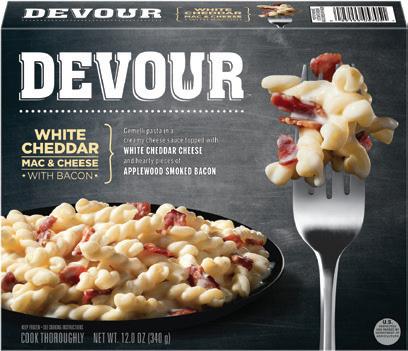


















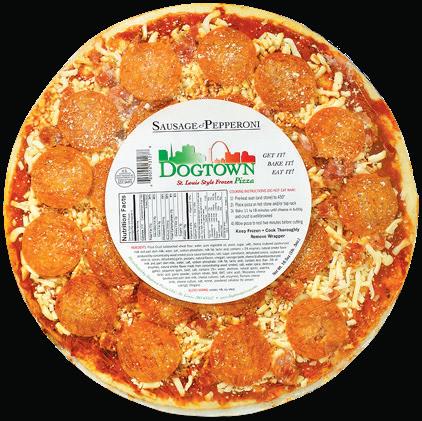
four Los Angeles County deputies accused of sharing photos from the Kobe Bryant helicopter crash scene be unsealed amid a lawsuit filed by Bryant’s widow Vanessa Bryant,” according to Yahoo. In his ruling, U.S. District Judge John F. Walter said, as reported by Black America Web, “Indeed where the case involves allegations of police misconduct, the public has a vested interest in assessing the truthfulness of the allegations of official misconduct,” Walter wrote. “Although the Court recognizes that this case has been the subject of public scrutiny and media attention and that the Deputy Defendants are legitimately concerned that they will encounter vitriol and social media attacks, such concerns, by themselves, are not sufficient to outweigh the public’s strong interest in access.” Bryant filed a lawsuit seeking damages for negligence, invasion of privacy, emotional distress and mental anguish, criticizing the department’s response after it was admitted that deputies improperly shared photos.
Sources: Associated Press, Black America Web, CNN, Defender Network, HipHopDx, I nstagram, People, TMZ






By Rebecca Rivas Of the Missouri Independent
Nearly two years ago, St. Louis
Circuit
Attorney Kim Gardner filed a motion for a new trial for Lamar Johnson, who has now spent 26 years in jail.
Gardner alleged former prosecutors and police fabricated evidence to get Johnson’s murder conviction in 1995. However, a circuit judge ruled Gardner didn’t have the power to file for a new trial, decades after Johnson was convicted, and dismissed the motion.
The case took many twists and turns, including Attorney General Eric Schmitt joining the argument that Gardner doesn’t have the authority.
On Tuesday, the Missouri Supreme Court sided with Schmitt, ruling that there is currently no state law that gives prosecutors authority to seek a new trial so many years after the case was adjudicated.
The legislature must first adopt a law “authorizing a circuit or prosecuting attorney to file a motion for new trial upon discovery of evidence indicating a wrongful conviction,” Chief Justice George W. Draper III wrote in a concurring opinion.
In wrongful conviction cases, there needs to be a mechanism for the state to “redress an error
it helped create,” Draper wrote. Schmitt’s spokesman said, “The Circuit Court brought our office in not to comment on innocence or guilt, but to ensure that the rule of law is upheld and the proper procedure is followed, and that’s exactly what we did.”
When Johnson learned about the Supreme Court decision, he said, “It is sad that rules and technicalities matter more than someone’s innocence,” according to his attorney Lindsay Runnels.
Gardner called the ruling “deeply disappointing.”
“Our Conviction Integrity Unit determined there is clear evidence to suggest that Lamar Johnson has wrongly sat in prison for over 20 years, convicted of a crime he did not commit,” Gardner said in a statement.
“This case is about the duty of a prosecutor to be a true minister of justice.”
The ruling is also a blow for a growing movement of elected prosecutors nationally who are establishing special units to review potential cases of wrongful conviction and prosecutorial misconduct.
“By declining to give prosecutors a mechanism to fulfill their sacred duty to correct an injustice, the Supreme Court’s decision puts the burden of correcting a wrongful conviction squarely on the shoulders of the

Lamar Johnson’s case went before the Missouri Supreme Court remotely on April 14, 2020 due to the COVID-19 pandemic.
wrongfully convicted themselves,” Runnels said It could also be damaging for
“If you elevate the procedural mechanisms over what is, in fact, justice, then you’re not
n “It is sad that rules and technicalities matter more than someone’s innocence.”
Lamar Johson
-
the court system’s standing with the community, said Michael Wolff, former Missouri Supreme Court chief justice.

people of this republic,” Wolff said. “Very simple.”
In the ruling, the court made clear that the case was not about Johnson’s innocence, but rather whether he had the “authority” to appeal the city court’s dismissal of Gardner’s motion for a new trial.
“No such authority exists,” the ruling states, “therefore, this Court dismisses the appeal.”
Judge Laura Denvir Stith noted in her concurrence that the misconduct outlined in Johnson’s filings, “if proved, would result in Mr. Johnson’s exoneration.”
Johnson will be filing a petition for writ of habeas corpus to get an evidentiary hearing to review some of the new evidence, Runnels said.
How long that process takes is up to the attorney general, she said.
Stith wrote that attorneys general have joined in habeas actions in the past and have also “conceded error.”
“This Court anticipates and expects the attorney general will apply these principles when called upon to consider whether to oppose a petition for writ of habeas corpus or other pleading filed by Mr. Johnson or others,” Stith wrote.
However, Schmitt could also “delay and obstruct” the process, which would mean it could take years for Johnson to even get a hearing, Runnels said.
going to get the kind of public confidence or support that the judiciary needs in order to function with the confidence of the
In 2019, Gardner filed a 67page motion that she claims provides evidence that the homicide detective in the case made up witness testimonies for the police report that was entered into evidence. Witnesses
were not aware of the changes until later.
Documents included in the motion allege that an assistant circuit attorney paid off the only eyewitness and cleared some of his outstanding tickets. Tuesday’s ruling will have an impact on St. Louis County and Jackson County, where prosecutors have also set up units to review these cases.
“A prosecutor who has evidence of a defendant’s innocence cannot and should not stand idly by while that defendant remains in prison,” said St. Louis County Prosecutor Wesley Bell. “Under Missouri law right now, there is nothing that prosecutor can do to bring that evidence before a court. That is wrong, and we should right it.”
Bell is calling on lawmakers in Jefferson City to pass a bill giving prosecutors’ offices the right to have a hearing in cases of wrongful conviction.
Through 2018, conviction integrity units across the country had been responsible for producing 344 exonerations nationwide, according to an amicus brief in support of Gardner submitted to the Missouri Supreme Court signed by 45 elected prosecutors in 25 states. Gardner said her office will continue to seek justice in this case and others like it. “What is at stake is equal justice under the law,” she said, “and public trust in the integrity of the entire criminal justice system.”
Republished with permission of content partner the Missouri Independent.
Historically, Black women have been an essential force in the struggle for women’s rights as well as the fight against structural racism in all aspects of society including politics, but most often not in executive leadership. Now we are seeing more Black women move beyond their important, traditional roles as organizers and voters (Black women are the largest single demographic group of supporters for the Democratic party) to lead as elected officials, particularly as mayors in some of the nation’s largest cities.
As recently as 2013, there was only one Black woman serving as a mayor in a major city in the entire country. Now we have several Black women in charge in many major cities including Washington, D.C., Charlotte, N.C., Atlanta, Ga., New Orleans, La., Baton Rouge, La., Chicago, Ill. and San Francisco, Ca. Moreover, Kim Janey, president of the Boston City Council, is likely to become acting mayor of the city of Boston if the incumbent mayor, Marty Walsh, becomes the United States Secretary of Labor. He has been nominated by President Biden and is expected to be confirmed.
strength and perseverance, while instilling in him his commendable values that include his unyielding social conscience and his concern for those other than himself. This story of an extraordinary Black mother and her child exemplifies what so many of us have experienced as a result of our mother’s love, wisdom, guidance, support and inspiration. They taught us early on that we have to be smarter, work harder or be better than anyone else just to stay in the game.

Black women have long been the most solid bedrock in the Black community and its institutions. That includes their front line activity in the Civil Rights Movement in the 1960s and the Black Lives Matter movement that came to fruition as a powerful political movement in the aftermath of the police shooting death of Michael Brown in Ferguson, Mo. in 2014. The strength and resolve of this historic movement continues to resonate today. Importantly, it was led by strong, determined Black women, often at great personal sacrifice, uncertainty and even physical danger over many months.
We know, because he has told us, that the social and political activism of LeBron James came from his upbringing by his mother, Gloria James. When he was born in Akron, Ohio, his mother was only 16 years old and his maternal grandmother (with whom he and his mother lived) died just three years later of a heart attack. The young mom and her child had to move 12 times in three years. LeBron attributes his steadfastness as a champion of his people as well as a champion on the basketball court to his mother’s influence. He says it was his mother who helped build his
Our response to those who seek to denigrate and undermine Black women leaders is to remind them about what characterizes Black women’s success. Like their mothers, they have self-awareness and pride, are strong and resilient and able to recover from difficult conditions. Black women leaders have had to rely on those qualities more heavily because of the obstacles and attacks they often face and in most cases, have been able to bounce back from. Refusing to be distracted to make progress, Black women leaders for the most part, have demonstrated the agility to transform obstacles into opportunities.
At the moment, the importance of the outcome of the mayoral race in St. Louis on April 6 can’t be over-emphasized. We often see elected officials with a national platform gain more attention than local elected officials. The truth is that the performance and productivity of local elected officials has more direct consequences for regular citizens in their daily lives than elected officials who are more limited in their impact because they are only part of a larger, more difficult to influence, political structure.
We need to be mindful that the mayor of the city of St. Louis is the CEO of a city that may be on the brink of a dramatic change in its fortunes, accelerated by the availability of substantially greater financial resources after the passage of the $1.9 trillion pandemic relief package. The old guard who have controlled the business and politics of the city for many decades will not go away easily. But if the Black women of St. Louis assert their voting strength, along with their progressive white allies, at the polls in April, the outcome will be a wrap. Tishaura Jones would become a colleague of the Black women mayors who are leading their communities to more successful, equitable and prosperous futures.
By Wesley Bell
Domestic violence is not only a crisis for victims. It concerns all of us, and all of us are needed to protect victims and save their lives. All of us are needed to stop this violence. Too often, domestic violence is seen as “her” problem. No more. Yes, we want victims to seek help and safety, but we can’t wipe our hands of the problem and stop there. Family, friends and loved ones must be accountable when we recognize the early signs of domestic violence. Everyone has to get involved and sometimes intervene. We must encourage family and friends we suspect of abusive behavior or potential abuse to get help. We may even feel compelled to report family or friends to the authorities when we see clear evidence of domestic violence. This may strain a relationship, but it may save a life. You may save several lives.
Had Bobby McCulley spared his own life and been taken into custody after killing his wife and her two children on Thursday night, then I wouldn’t talk about him today. I would be shattered and angry, but I would respect the rights of the accused. In my public silence, our team would be preparing a case to make sure Mr. McCul-
ley never spent one single day or night outside of a jail or prison for the rest of his life. But Mr. McCulley is among the trail of the dead he left in our community. He will not see his day in court. I am powerless to prosecute Mr. McCulley for his crimes, just as I am powerless to bring the dead to life. I am powerless to bring back to life Roseann McCulley and her two children, Kayla and Kayden.

But I do want to use what power I have to speak directly to our community. I want to ask everyone to put down the guns. Put down the fists. We have to stop turning on each other. We have to stop turning on the ones we love or used to love. We have to stop killing the ones we love or used to love. For God’s sake, we have to stop killing our children. The McCulleys’ tragedy did not begin with a triple murder. It began with domestic assault. When he killed Roseann and her children, Mr. McCulley was fleeing police trying to arrest him for domestic violence
By Ben Jealous
It is time for a maximum push for a new minimum wage.
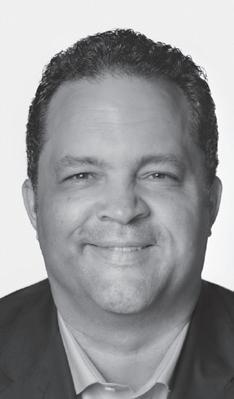
The federal minimum wage has not budged for more than a decade. But the cost of living keeps rising. So, low-income people fall further and further behind. Raising the minimum wage to $15 an hour would lift millions of working people out of poverty. This is especially true for families headed by women, especially Black women, who are disproportionately clustered in minimum-wage jobs.
It would make a big dent in the income and wealth gaps that make Black Americans poorer and their families more vulnerable. And it would help right something that is seriously wrong with our economy, which keeps pushing a greater share of the country’s overall wealth to the tiny percentage of the most ridiculously rich people at the very top.
This is a moral question as well as an economic one.
If the minimum wage had kept up with the rise in workers’ productivity over the years, it would now be closer to $25 an hour. But it didn’t.
In other words, as a society, we have been effectively stealing from the people who already have the least.
So this is about justice. And it is specifically about racial justice.
According to congressional testimony from the Economic Policy Institute last month, “Due to the impacts of structural racism and sexism, women and Black and Hispanic men are concentrated in lowwage jobs” and would greatly benefit from a higher minimum wage.
A higher percentage of Black women are full-time minimum wage workers than any other racial group. More than one-third of Black women have been in frontline jobs during the pandemic, where they are still paid less than white men.
This is about the health of our children and families.
About 80 percent of Black women are sole, primary, or co-breadwinners for their households. Bringing home a few thousand more dollars per year could be transformative for low-income families.
When he was campaigning, President Joe Biden told voters
n If the minimum wage had kept up with the rise in workers’ productivity over the years, it would now be closer to $25 an hour. But it didn’t.
that he supported a $15 minimum wage. House Democrats included it in their most recent COVID relief bill. But because of an interpretation of Senate rules, the minimum wage may not be included in the final bill.
H.R. 1 Bill –
Thank you Cori Bush
Congresswoman Cori Bush deserves our gratitude for cosponsoring H.R.1, the For the People Act.
against her. Roseann was doing all of the right things. She was cooperating with detectives and prosecutors. She was trying to use the law to protect herself and seek justice. But Mr. McCulley acted wildly outside of the law.
I am deeply sorry and shaken that the law was not powerful enough to protect Roseann, Kayla and Kayden. But I do beg people to keep coming to us for protection and justice. There is evil that the courts cannot stop, but the courts are all we have to seek justice and retribution for crime. If you are a victim of domestic violence, please, do not suffer in silence. Come forward. Seek justice and protection.
I ask everyone to look in their own hearts and souls and seek the help they need. We have to start helping ourselves and not hurting others. We can’t solve our problems with violence. We can’t solve our problems with our fists. We can’t solve our problems with guns. We can only cause more problems and pain with fists and guns.
And remember: Public safety is also private safety. If you suspect someone is not safe in the privacy of their own home, in what should be their safest space, then please get involved.
Wesley Bell is St. Louis County prosecuting attorney.
This bill, which passed in the U.S. House of Representatives by a vote of 220 to 210, is the most far-reaching voting rights legislation in decades. It would mandate two weeks of early voting, no-excuse absentee voting, automatic Election Day registration, an end to the influence of dark money in elections, and independent redistricting.
This legislation is needed now more than ever, as the Republican response to the upsurge in voting by people
of color has been to seek the imposition of new voting restrictions, encompassing 250 new proposed laws in 43 states, including Missouri. The fight for this bill now goes to the U.S. Senate. It is critical that we demand that Senators Roy Blunt and Josh Hawley support the For the People Act.
Greg Campbell Creve Coeur
Tishaura Jones in the only real choice
The approaching St. Louis mayoral election may pit two progressive candidates against each other, but there is only one real choice for that post:
That cannot be the final word. The administration must put its weight behind the Raise the Wage Act of 2021, which would get us to a $15 minimum by 2025. For congressional Democrats and the Biden-Harris administration, fighting for a $15 minimum wage is a place where moral obligation and political interests intersect.
Biden and Democrats campaigned on a $15 minimum. And they are in the White House with a Senate majority because Black women organized and turned out the vote. Rev. William Barber recently reminded us that Rev. Martin Luther King Jr. called for a $2 an hour minimum wage almost 60 years ago. That would be over $15 today if it kept up with inflation.
King talked about racial equality as an unfulfilled promise from the nation’s Founding Fathers. Democrats cannot let a living wage remain an unfulfilled promise to Black Americans.
Ben Jealous serves as president of People For the American Way and People For the American Way Foundation. Jealous has decades of experience as a leader, coalition builder, campaigner for social justice and seasoned nonprofit executive. In 2008, he was chosen as the youngestever president and CEO of the NAACP. He is a graduate of Columbia University and Oxford, where he was a Rhodes Scholar, and he has taught at Princeton and the University of Pennsylvania.
All letters are edited for length and style.
Tishaura Jones. It’s inconceivable that a white woman representing the Dutchtown neighborhood, or 20th Ward, with little or no history of fostering economic growth in downtrodden northside communities like the Penrose, Fairground or WellsGoodfellow neighborhoods could be on the level in a city with so many disparities. If nothing, I believe City Treasurer Jones to be honest, fair dealing and passionate in her commitment to uplift this moribund city and that is why she deserves to be St. Louis’ next mayor.
Kevin Boone St. Louis




Parents Cody and Samantha with their two daughters Mason (2) and Paydenn (6) who has been diagnosed with an aggressive form of kidney cancer. The family was together for a birthday parade given by Ferguson Chief of Police Jason Armstrong on Sat., March 6, 2021.

The St. Louis Public School Foundation and the American Federation of Teachers host a forum for the candidates running for the open seats on the Board of Educations at 6 p.m. on Thursday, March 11. The virtual public forum
will be moderated by the League of Women Voters of Metro St. Louis. For more information on the forum go to https://slpsfoundation. org/forum/
Whether you adjust your clocks and watches on Saturday night before you go to bed or wait until Sunday morning, Daylight Saving Time begins at 2 a.m. on Sunday, March 14. Move
your timepiece forward one hour to 3 a.m. DST provides extra daylight in the evenings during spring, summer and fall. This year, Daylight Saving Time ends on Sunday, Nov. 7.

By Juliane Malveaux For The St. Louis American
March is Women’s History Month, and this month is the perfect time to lift the Black women’s organizations that make such an essential difference in our lives. Last year, both the National Council of Negro Women (NCNW) and the National Association of Negro Business and Professional Women (NANBPW) celebrated their 85th anniversary. Thanks to COVID-19, neither organization had the opportunity to celebrate in the way they planned; now they are celebrating by Zoom. The differently scaled celebration does not diminish the importance that these organizations have.
When I think of NCNW, I think of the late Dr. Dorothy Irene Height, who used to say, “If I tap you with my finger, you may or may not feel it, but if I combine these five fingers into a fist, you will definitely feel it.” Dr. Height was not a pugilistic woman, but she was a fervent believer in the power of the collective. And NCNW, an “organization of organizations,” certainly fits that bill. Too many times, in modern history, NCNW, the collective, has been present. Many of us, for example, attended Labor Secretary Alexis Herman’s confirmation hearings, many wearing the crimson and cream colors of Delta Sigma Theta sorority, Ms. Herman’s sorority (and also mine). Deltas were not the only people in the house. Other Divine Nine sisters joined us, Alpha Kappa Alpha, Zeta Phi Beta and Sigma Gamma Rho. We made an impression, and those senators prepared to grill Herman had to think twice because we were there.

Black women had a tremendous impact on this current election. I think of LaTosha Brown, a Black Votes Matter leader, and the tireless work she did to get voters out. I think of Melanie Campbell and the sisters of the Black Women’s Roundtable. There are so many more Black women and Black women’s organizations that made a difference in this election. President Biden has acknowledged the Black community and Black women in particular.
It is crucial, though, that our coalition continues to stay active and connected. One Black woman, Kristen Clarke, has been nominated to serve as assistant attorney general for civil rights. Already, the right wing is going after her with their usual smear campaign tactics, taking comments out of context and blowing them up. The same coalition that worked to get the vote out now must work to support this exceptional woman.
Similarly, two other women of color are being smeared. Vanita Gupta, President of the Leadership Conference on Civil and Human Rights, has been attacked by rabid right-wingers. Another woman of color, Neera Tanden, who leads the Center for American Progress, has been attacked for her tweets. Really? Her tweets, some say, are vicious. When have tweets adhered to a civility protocol? The coalition of Black women who have always made a difference must step up to support these women, too.
Dr. Mary McLeod Bethune, the founder of NCNW, was a firm believer in diversity and inclusion. She reached out to white women who shared our values and worked in coalition with them when she could, given the constraints of the time. She would approve supporting sisters Gupta and Tanden, women of color just like us. While we might not be on the same page as these sisters on everything, we have enough in common to be passionate in their defense. The smear tactics that the rabid right uses to smear these women are unacceptable. They are the same tactics that these people use against Vice President Kamala Harris. We need to make sure they don’t work.
I often wonder what motivated Dr. Bethune to form an organization in the middle of the Great Depression, when overall unemployment rates soared to 25% and Black unemployment was two or three times higher. In 1935, food lines snaked around city blocks and down dusty roads in rural communities. Too many Black folks were pushed to the back of the line or denied assistance altogether. The indignities were innumerable, but Bethune shrugged them off to build a powerful organization with unprecedented access to President Roosevelt. She walked into Roosevelt’s office with the collective strength of Black women in her fingers or her fist.
Black women’s organizations don’t get the credit they are due, so these organizations must be lifted in this Women’s History Month. What would our nation be without these organizations who get out the vote, raise money for scholarships, provide social and civic services, and do so much more? I don’t want to know the answer. All I know is that Black women’s organizations matter. We must celebrate them!
is an economist and author.
Juliane Malveaux

By Sophie Hurwitz
Of the St. Louis American
Over the past month, a group of parents, grandparents and community members under the name has rallied to keep Paul Laurence Dunbar School in the Jeff Vander Lou neighborhood open. Dunbar School
was one of six St. Louis Public School buildings slated to close in January, when the SLPS Board voted to downsize due to the relatively low student population across the district.
The Communities One Project, as stated, wants to keep Dunbar open in particular due to its role within the Jeff Vander Lou community. They note that it is part of the “trifecta”—an area in which Dunbar Elementary, Vashon High School, and William J. Harrison St. Louis Community College are all in walking distance, meaning that students growing up in the area are able to remain within their own community for their entire education should they choose to do so.
The school, originally known as Glasgow School, was built in 1912 as a whites-only elementary and middle school. As the demographics of the neighborhood changed, though, the then-superintendent of St. Louis Public Schools declared that the school would be turned into one for Black children in 1933. The building was renamed after famous AfricanAmerican poet Paul Laurence Dunbar.

Another school that was slated for closure in January, Sumner High School, was granted a temporary reprieve during the same St. Louis Public Schools Board of Education session in which the vote to close Dunbar and 5 other schools was passed. On Tuesday evening, the board is expected to make a final vote on Sumner’s closure, after alumni of the historic North Side school rallied in an attempt to save it this past month.
Dunbar parent Jerrica Harris said in a press release from The Communities One Project that part of Dunbar’s appeal is that she can walk her two young children — a first-grader and a pre-k student — to school each morning. “Closing Dunbar, to me, would be a mistake,” she
said. “How can you close down a great place where memories have been made down generations?”
Members of The Communities One Project assert that with the new pandemic stimulus plan, funding from the Missouri lottery, and the fact that SLPS is currently on sound financial footing, there should be no reason to close the schools. They also note that Dunbar in particular is 0.6 miles from
the new National Geospatial Intelligence Agency site in North City. Miguel and Carla Alexander, leaders with the Communities One Project and proprietors of Miss Tillie’s Corner, a local history organization for children, worry that, should Dunbar close, it might make it so NGA no longer wishes to build in the neighborhood.
Twenty-sixth Ward Alderwoman Shameem Clark Hubbard has endorsed the proj-

The school, originally known as Glasgow School, was built in 1912 as a whites-only elementary and middle school. As the demographics of the neighborhood changed, though, the then-superintendent of St. Louis Public Schools declared that the school would be turned into one for Black children in 1933.
ect’s call for Superintendent Adams to take more community input and reconsider Dunbar’s closing. “These schools have anchored our communities [and] attracted families and businesses that have boosted the local economy,” she said in a Feb. 5th letter to Adams. “It is important that we keep neighborhood cohesion, trust, and families connected with teachers…I respectfully request that you reconsider your position
Continued from A1 tunities that are out there to hear about the candidates,” McKinney said. “So, I’m looking on social media and whenever some group has a debate, we’re sharing that information with our people.”
In addition to the social media postings, McKinney said SLACO has about 10 community volunteers who are canvassing neighborhoods and handing out flyers with information about when the election is and where their polling places are.
SLACO is partnering in this effort with Neighborhood FORWARD, an organization McKinney said is located in several cities.
“They are a group of people that are interested in trying to get people registered to vote, they’re interested in trying to educate people about the voting process — so it’s kind of a natural fit,” he said.
Neighborhood FORWARD’s website bills itself as a national movement built by concerned citizens,
regarding this matter.” There are currently about 150 students enrolled at Dunbar, including pre-kindergarten students and elementary school students.
“School is out in May,” Carla Alexander said. “A lot of people are thinking oh, these schools are closed. But they’re not closed yet. And we’re asking the board to reconsider. We’re going to fight this as best as we can.”
faith leaders, civil rights activists, elected officials, business partners and non-profit organizations around the nation.
“We are dedicated to action on the grassroots level, one neighborhood at a time,” the website states.
While these efforts rev up, voter turnout in March’s primary dropped by more than 6% when compared to turnout in the city’s last mayoral primary in 2017.
That’s something McKinney said he’s disappointed in. He hopes the April election brings out at least 30% of registered voters, which is the same percentage of voters that cast ballots in the 2017 general mayoral election.
“I just think that they ought to understand that it is very important that they get out to vote, and if they have any questions regarding the process or what’s going on they can email us,” McKinney said of the city’s voters.
SLACO can be reached through email at info@slaco-mo.org. More information can be found on www.slaco-mo.org or on their Facebook page at www.facebook. com/314SLACO


Continued from A1 grams for students. In addition, the plan suggests that Sumner be designated a National Historic Landmark by 2024. Superintendent Adams emphasized that “this is not a school that’s going to turn kids into artists,” or a more professionalized arts school like Central Visual and Performing Arts academy, but rather a place that will “expose kids to music, dance, art and activism with the hope that it will help
make them more well-rounded individuals. What the research says about a school like this is that it really empowers kids to think differently about themselves, and think differently about where they sit in the trajectory of becoming an adult.” The path ahead for Sumner will not be without obstacles, despite these community collaborations: its current enrollment is down to 225 from a peak of over 2,000 decades ago, and proficiency rates on standardized tests in reading and math among those students are low. But the community partners know that, Adams
said. “They understand clearly that Sumner has struggled for a very long period of time, and they think that this enhanced development of the arts can help motivate kids.”
“This is a proposal and an opportunity. There are no guarantees here,” he added. “But [the community partners] are willing to lean in, and I’m willing to support them in this effort for the 225 kids in this building. But I don’t want to be naïve about the fact that it’s going to be very difficult to turn this school around in the way the community deserves.”



The St. Louis American Staff
St. Louis City’s four newest 100% electric vehicles, with specially designed environmental messaging are now in use by the Department of Health, the city mail room, the Board of Public Service and the comptrollers office.
This is the early stage of a transition toward replacing the city’s older, “non-clean emissions vehicles.”
“Vehicle electrification plays such an important part in the city’s overall decarbonization effort and steadfast commitment to achieving carbon neutrality by 2050,” said Catherine Werner, the city’s sustainability director.
The new vehicles have been paid for with a portion of the $423,000 the city was awarded through the Missouri Department of Natural Resources Volkswagen Trust funds. There is not added cost to city taxpayers. All city departments have been directed by the mayor’s office to prioritize the purchase of low and no emission vehicles over comparable gasoline-powered, internal combustion engine vehicles whenever cost effective.
Electronic vehicles have been associated with many health, environmental and financial benefits, including lower fuel, operating and maintenance costs, fewer greenhouse gasses and no tailpipe emissions that contribute to air pollution.
The city already has several electric vehicles in service at St. Louis Lambert Internal Airport and plans to purchase additional ones later this year.


will encourage
By Chad Davis St. Louis Public Radio
A St. Louis organization is expanding its geospatial education program. Gateway Global American Youth and Business Alliance Academies is partnering with engineering company Leidos to add more than 100 students to Gateway Global’s “Entry to Executive” program, which helps prepare students for entry-level geographic information system and geospatial jobs.
“It will open up opportunities for internships for mentorships and other entry-level job opportunities,” Gateway Global President Zekita Armstrong Asuquo said. “It will help to put them on a pathway where they can see how geospatial science and technology converges with other sectors that they might be interested in.”
The organization offers classes in the University City and Ferguson-Florissant school districts and KIPP charter schools. Leidos will sponsor groups of students joining the program. It also works with school districts across the state.
accelerates and expands the career journey for students and exposes them to a wide range of career paths across the intelligence community.
Gateway Global teaches several cohorts of about 15 students throughout the year. Armstrong Asuquo said the partnership will allow doubling the size of the groups and teaching more than 100 students across the St. Louis region this year.
n “It will help to put them on a pathway where they can see how geospatial science and technology converges with other sectors that they might be interested in.”
– Gateway Global President Zekita Armstrong Asuquo
“Global Gateway represents three vital components to building the workforce of the future — education, inspiration and innovation,” Leidos Intelligence Group President Vicki Schmanske said in a press release. “By providing early exposure to STEM programs and training, [the program]
Geospatial and geographic information system jobs are becoming more important in transportation, agriculture and national security industries, said Armstrong Asuquo, Gateway Global’s founder. Students need to be prepared for these opportunities in the coming years for the United States to remain globally competitive.
“It’s imperative that we find innovative ways to skill our young people and to get them on pathways sooner rather than later,” Armstrong Asuquo said.
She said teaching high school students geographic information system essentials will also diversify the workforce.
“The United States has a skills gap issue, and this is one of those issues where we need to have more diversified talent, both racially and socioeconomically.” Armstrong Asuquo hopes to later expand the program beyond Missouri. Follow Chad on Twitter: @iamcdavis
Veteran anchor
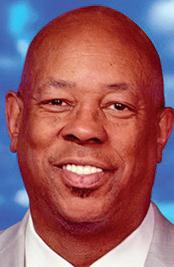
another, one re-invention after another, so it is my honor to be the news director at KSDK Five On Your Side.” Holliday is KSDK’s longest serving journalist. He started in 1979 as a weekend sportscaster. Holliday will leave

Program, which is designed for diverse, high-potential, early-career attorneys. The program provides Pathfinders with tools for building and leveraging professional networks through relationship building, leadership skills and career development strategies. As a Pathfinder, Phillips will participate in meetings,


By Charlene Crowell
Over the past year, COVID19 and its variants have plagued the globe taking lives and interrupting normal activities in virtually all areas of life.

For Black America, already plagued with steep health, income and wealth disparities, coping with the pandemic has been even more painful. With less income, higher unemployment, and less access to financial resources, both businesses and consumers alike strive to hold on for much-need relief. In many cases, modest financial resources are either gone or near their end, and the patience to cope has worn thin.
In response, an unparalleled coalition of more than 100 national, state and local advocates are pressing Congress and the Biden Administration for substantive changes to deliver equitable relief to underserved communities. Foremost in the coalition’s concern was getting Paycheck Protection Program (PPP) funds to deserving but largely left out businesses from earlier funding rounds.
“The design of PPP strongly disfavored businesses owned by people of color, who generally do not have established
banking and face greater obstacles in capital access,” wrote the coalition. “Moreover, the incentive for lenders to fund large loans, which yielded larger fees, has proved to be a barrier to entry for the vast majority of businesses of color.”
Fortunately, beginning February 24, new PPP approvals will be restricted to businesses with 20 or fewer employees for two weeks in order to target smaller businesses with relief. The SBA will also implement new rules in the coming days that will lessen barriers for small businesses in several areas. These key changes will provide better access and equitable assistance: using gross income instead of net profit as an eligibility measure, improved practices collecting demographic data and eliminating student debt defaults/delinquency from borrower applicants.
However, despite these changes, more must be done to aid businesses that were already underserved by PPP.
“Many Black, Latino, Asian and immigrant business owners are sole proprietors and independent contractors – vital to their communities,” said Ashley Harrington, director of Federal Advocacy with the Center for Responsible Lending (CRL). “Congress should make increased loan amount eligibility for sole proprietors and independent contractors retroactive, as they did when the rule changed for small farmers and ranchers. We must ensure all vulnerable businesses have

equitable access to the relief they need to weather this crisis.”
Well-known national organization such as the NAACP, National Action Network and the National Fair Housing Alliance, are partnering with Black business organizations like U.S. Black Chambers, Inc. and the United States Hispanic Chamber of Commerce, along with local partners including the Boston Impact Initiative, Chicago Urban League, and Pacific Community Ventures.
Speaking in a united voice to federal officials, this coalition of organizations and businesses called directly on February 12 for race-explicit solutions to the new PPP relief.
Substantiating this appeal was data that showed that these same businesses that previously missed out on PPP funding collectively provide 8.7 million
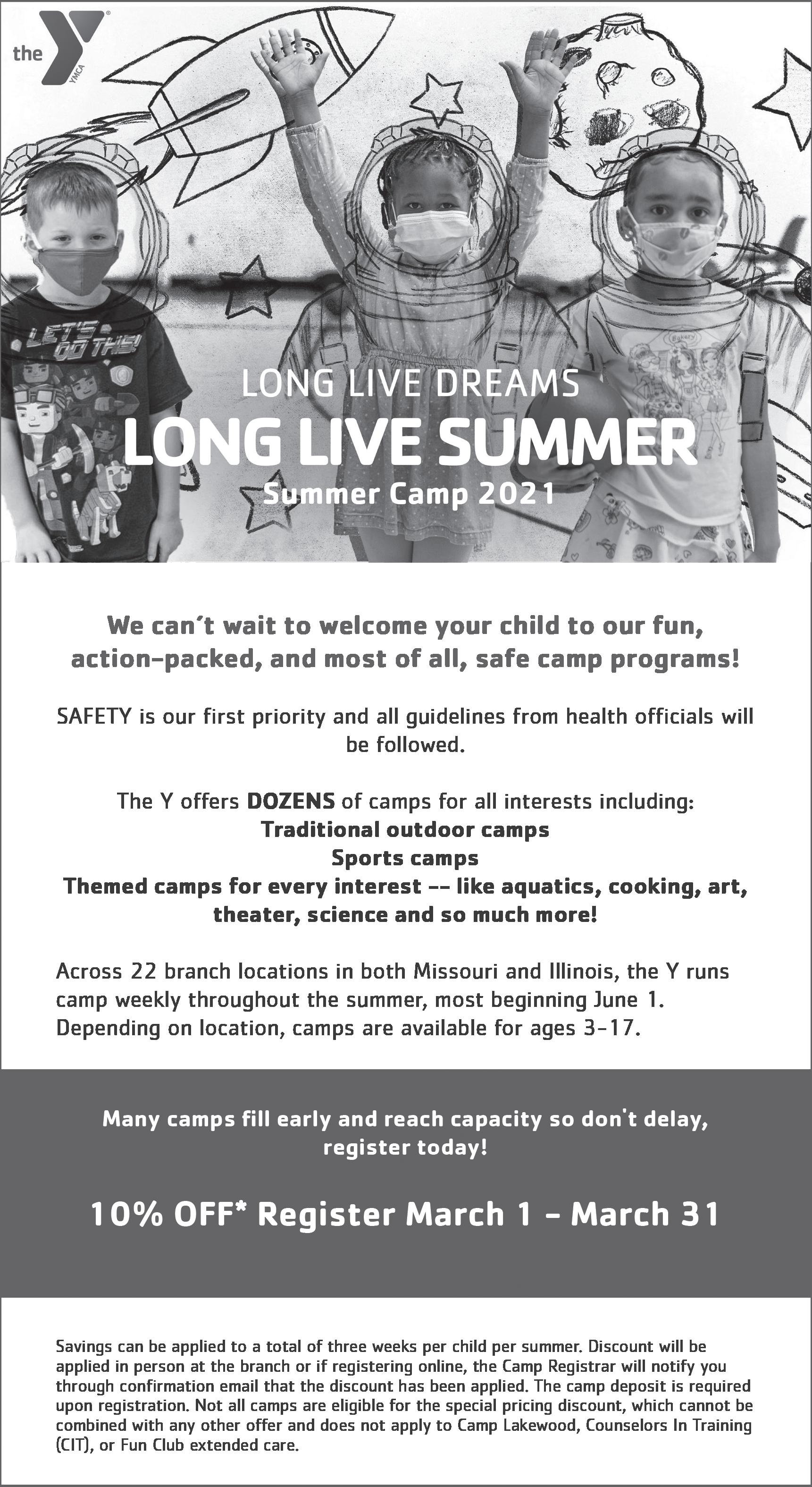
jobs, $280 billion in annual payroll, and $1.3 trillion in revenue.
“This targeted aid should serve as a model for a longterm revitalization program aimed at providing small businesses in these hard-hit areas with the resources to recover faster and emerge strong”, said Luke Pardue, and economist with Gusto, a national data firm specializing in small businesses. The firm is also a member of the coalition.
“Such a plan could take the form of targeted block grants that Congress provides to distressed localities, who are then able to spend the funds on small business development, job training, and support programs to improve job retention. Congress could make the Neighborhood Capital Investment program permanent with $12 billion in annual appropriation.”
In its own independent PPP analysis, CRL also noted the pandemic’s profound effect on small businesses.
“At the outset of the program and during the first round of funding from April 3 to April 16, 2020, it was clear that structural inequities were built in to the administration of the program, the application process, and the fee structure”, states a CRL policy brief.
“These structural inequities made it extremely difficult for small businesses – and particularly businesses owned by people of color -- to qualify for assistance or receive it in time to save their businesses and the jobs of the employees that depend upon them.”
Additionally, and according to CRL, PPP administration by the Small Business Association failed to require demographic data to determine if lenders prioritized underserved markets and businesses, and consequently failed to issue lender about prioritizing borrowers in underserved markets as well.
Just as Black businesses struggle to access capital, exclusionary housing policies have made it nearly impossible for Blacks to build home equity on parity with whites and/
or convert home equity into wealth needed to begin a business. In short, denied access to finance is a key reason why many Black consumers struggle as renters instead of becoming homeowners.
Representing the nation’s largest trade association with its 1.4 million members working in residential and commercial real estate, the National Association of Realtors recently released a report that analyzed data from the Census Bureau’s American Consumer Survey. From a racial perspective, NAR examined homeownership over the past decade, looking at characteristics of who purchased homes, their reasons, and financial backgrounds.
Noting that homeownership boosts consumer wealth, NAR concluded that the net worth of a homeowner is 40 times that of a renter: $255,000 versus $6,300 in 2019. But, according to NAR, not all families enjoy the same access to homeownership, and homeownership itself does not offer a complete perspective.
White consumers have consistently held a homeownership rate of 70% or higher. But over the past decade, Black homeownership, the single group most negatively impacted by the Great Recession, dropped from 2009 to2019 to 42%, less than that of Latinos at 48%, or Asian-Americans at nearly 61%. Depending upon locale, White homeownership ranged from 49-78%, Black homeownership ranged from a low of 5% in North Dakota to 70% in Puerto Rico. In the continental United States, 2019’s highest Black homeowners was in South Carolina and Maryland, both at 52%.
Explaining the racial disparities, Lawrence Yun, NAR’s chief economist said, “The residential housing market’s strong performance during the pandemic helped homeowners enjoy a significant increase in wealth via approximately $1 trillion in additional home equity over the last year. However, as indicative of the K-shaped economic recovery, greater

numbers of potential first-time homebuyers – many of whom are minorities – are feeling discouraged by disproportionate job losses. Essentially, they’re being priced out of owning a home because of rising home prices resulting from historically-low housing inventory.”
“For Black Americans,” continued Yun, “in general the greater likelihood of having student loan debt, combined with lower household incomes and accrued savings when compared to the national average, adds to the challenge.”
With the exception of Asian and Pacific Islanders, Black heads of household had a higher percentage of student debt than either Latinos or Whites. While 21% of Whites held $30,000 in student debt, according to NAR, Black student loan debt averaged $40,000 and affected 43%. Latino student debt was the lowest amount at $20,000, while that held by Asian/ Pacific Islanders was the highest at $42,600. In December 2020, according to NAR, the median price of an existing home was nearly $309,800, 13% more costly than the previous year, and over 40% higher than five years ago. In 2019, Black median income was short of $70,000, while that of Whites that same year the median income was $90,000.
Groups like CRL, National Fair Housing Alliance, National Consumer Law Center, and many others are pushing for funding that will help preserve homeownership with a $10 billion housing assistance fund that would provide direct payments to homeowners for mortgages, utilities, property taxes, property insurance and other related housing costs. Advocates are also requesting $100 million for housing counseling and $40 million for the Fair Housing Initiative program to assist families disproportionately impacted by COVID-19. They highlight that previous federal programs, such as Treasury’s Hardest Hit Fund, were designed to help struggling homeowners during the housing crisis of 2008 but came too late and provided little relief in communities of color. Black and Latino communities together unnecessarily lost $1 trillion of wealth during the Great Recession. Public policies and broad societal discrimination created many of today’s economic inequities. It is now time to correct the ills of systemic discrimination. And it is government’s duty to ensure that the hardest hit communities receive their fair share of relief. Charlene Crowell is a senior fellow with the Center for Responsible Lending. Email her at Charlene.crowell@ responsiblelending.org
By Umar Lee and Ben Poremba


The dust has almost settled from our first experience with approval voting, and we now know that St. Louis Treasurer Tishaura Jones will face 20th Ward Alderwoman Cara Spencer on April 6th to determine the next Mayor of the City of St. Louis. Many people on social media have framed this race as a battle between two progressives with a similar amount of experience and very little in the way of policy difference. Others have suggested that because Spencer is a self-identified progressive, race is no longer an issue in the mayoral race. We beg to differ and would like to raise a few questions regarding these points
Experience
Here’s what we know:
Tishaura Jones has prepared and passed eight budgets before the Board of Alderpersons. She also managed these budgets ($14 million annually) for eight years. She was the first African American and the first woman Assistant Minority Leader in the Missouri House of Representatives. In the private sector, Jones worked as the Vice President of Municipal Finance at the minority-owned, Oaklandbased investment firm Blaylock Robert Van. Prior to that, she was HR Director for 11 years at People’s Health Clinic. Tishaura graduated from Hampton with a Bachelors in Finance, and from
SLU with a Masters in Hospital and Health Care Administration. Cara Spencer was elected 20th Ward Alderperson in 2015. Her official website states that upon “graduating with a degree in math, Cara became a consultant to Fortune 100 companies providing strategic advice on product development,” a position she held for 15 years. Without devaluing the complexity or importance of her work, it is unclear whether Cara Spencer has had any significant executive level experience managing large scale operations, systems, and people.
Progressive Credentials
Cara Spencer’s tenure as Alderwoman has many thumbprints of the progressive agenda. She introduced gun control measures, combated special interests, and was a vocal opponent of the efforts to privatize the airport. However, when it comes to the most urgent matters of progressive advocacy -issues that are on top of the list for progressive activists -- she has been largely silent.
Police, Protests, and The Workhouse
The modern Civil Rights Movement was born on the streets of St. Louis County with the murder of Mike Brown Jr. by Ferguson police officer Darren Wilson on August 9th, 2014. From that moment forward, St. Louis has been in a continuous spirit of protest including those after the police killings of Vonderrit Myers, Kajieme Powell, and Mansur Ball-Bey; the acquittal of St. Louis police officer Jason Stockley; the calls for the removal of the Confederate and other monuments, the campaign to close the City Workhouse; this past summer’s protests fueled by the killing of George Floyd and Breonna Taylor; and the Resign Lyda movement.
At each of these pivotal moments in St. Louis history,




Tishaura Jones has been at the forefront of each protest and unequivocal in her support of these progressive movements.
Cara Spencer has been absent on these issues and has refused to give straight answers to simple questions such as:
• Do you support the closing of the Workhouse?
• Will you sit down with the St. Louis Police Officers Association and Jeff Roorda?
• Do you support public safety reform that includes defunding police and reimagining criminal justice in St. Louis?
Continued Epidemic of Violence
Thousands of people are shot in the city of St. Louis annually and hundreds are killed. Each homicide victim in our city represents a generational family tragedy. Thousands of St. Louis families have had loved ones die violently. The epidemic of violence is seldom mentioned by Cara Spencer and her supporters. In fact, we often hear from several Spencer supporters that “St. Louis isn’t really dangerous” or “it’s just a perception and the way crime rates are tabulated”. Statistically St. Louis isn’t all that dangerous for white people; but for African-Americans St. Louis is one of the most dangerous
places in the world. Does Cara Spencer realize this? Do her supporters? It’s very easy to be aloof regarding the war-zone levels of violence when you’re removed from it personally or geographically.
While parts of our city are strong and growing stronger, we must recognize that the benefits of growth are not jointly shared. We see inequities between those who benefit from development and those who are displaced by it. Several South City neighborhoods have seen radical racial transformation in the past 10-15 years. Bars on Cherokee Street have roughly the same demographic mix as Chesterfield. The Black population in South City has plummeted while the white population has increased dramatically. Out are the parks for children and in are the parks for dogs. While Tishaura Jones has centered issues of racial and economic justice in her campaign, Spencer has tended to only speak of ways to attract more suburban residents and transplants to the city. There’s something telling about the fact that neighbors of Cara Spencer in the 20th Ward rejected her in favor of Tishaura Jones in the first round of voting. Could
it be the perception that Cara Spencer and her allies represent the forces of gentrification and are uninterested in anyone but middle to upper class whites moving into the city (mostly without children)? In short, what is the affordable housing plan of Cara Spencer to stop the decline of the African American population? Does she have a plan for the unhoused? What about a job creation plan for those without the skills to work at Cortex? Or is the plan to empty the city of low-income residents and let St. Louis County worry about it?
Conclusive Remarks
During last year’s primary election for Circuit Attorney for the City of St. Louis, the incumbent Kim Gardner shared on Social Media the numerous death threats and racial epithets that she had received. Gardner, whose courageous work against dirty cops and gubernatorial corruption, and on behalf of social justice reform, was attacked in the most vile and racist manner. Even after her decisive victory, she was subjected to efforts to upend her election and disenfranchise the tens of thousand of voters who supported her. Spencer did not endorse Gardner and she refrained from publicly commenting on the race.
It isn’t our place to speculate what Cara Spencer’s elusiveness on this issue and the issues we mentioned above has to do with. Is it lack of interest and awareness? Or is it a politically calculated pandering to committed anti-progressive voters in conservative wards without whom she can not win the mayorship?
From looking at the data from the first round, we see that Spencer’s support is almost exclusively white. Statistically very few non-white voters are supporting her. Meanwhile, Tishaura Jones has built a multiracial and diverse coalition. Dress it up how you want to: but this mayoral race is just
another old school Black-White St. Louis political race. One cannot represent progressive politics and simultaneously be a vehicle for monolithic white political power and derailing Black political progress. Many progressive white Spencer supporters have alleged that support for Tishaura Jones is about “identity politics”. This allegation obscures the fact that white politicians are the greatest beneficiaries of identity politics. Lyda Krewson became mayor, as many before her, because of white racial-solidarity. If Cara Spencer becomes mayor, it will be for the same reason.
When Percy Green scaled the Gateway Arch decades ago protesting the lack of Black workers he said he was seeking the support of the Black community and “fair-minded whites”. More than half a century later we’re still waiting on enough fair-minded whites to reject racial-solidarity in favor of racial-justice. When we see our city that has been ravaged by generational neglect due to systemic racist policies and the Team Four Plan, we’re reminded of the phrase “if you wanna fly, you gotta give up the shit that weighs you down”. So while we welcome and appreciate Cara Spencer’s work on behalf of progress, the only path forward for St. Louis is electing Tishaura Jones for mayor on April 6th. She has put racial equity, criminal justice reform, and economic justice at the heart of her platform. We need a leader who has the track record and experience to tackle the burning challenges our city faces, and someone who will reset the city’s priorities to address the needs of the Black community, the poor, the incarcerated, the displaced, and the unhoused.
Umar Lee is an activist and writer from St. Louis. Ben Poremba is a restaurateur and social entrepreneur





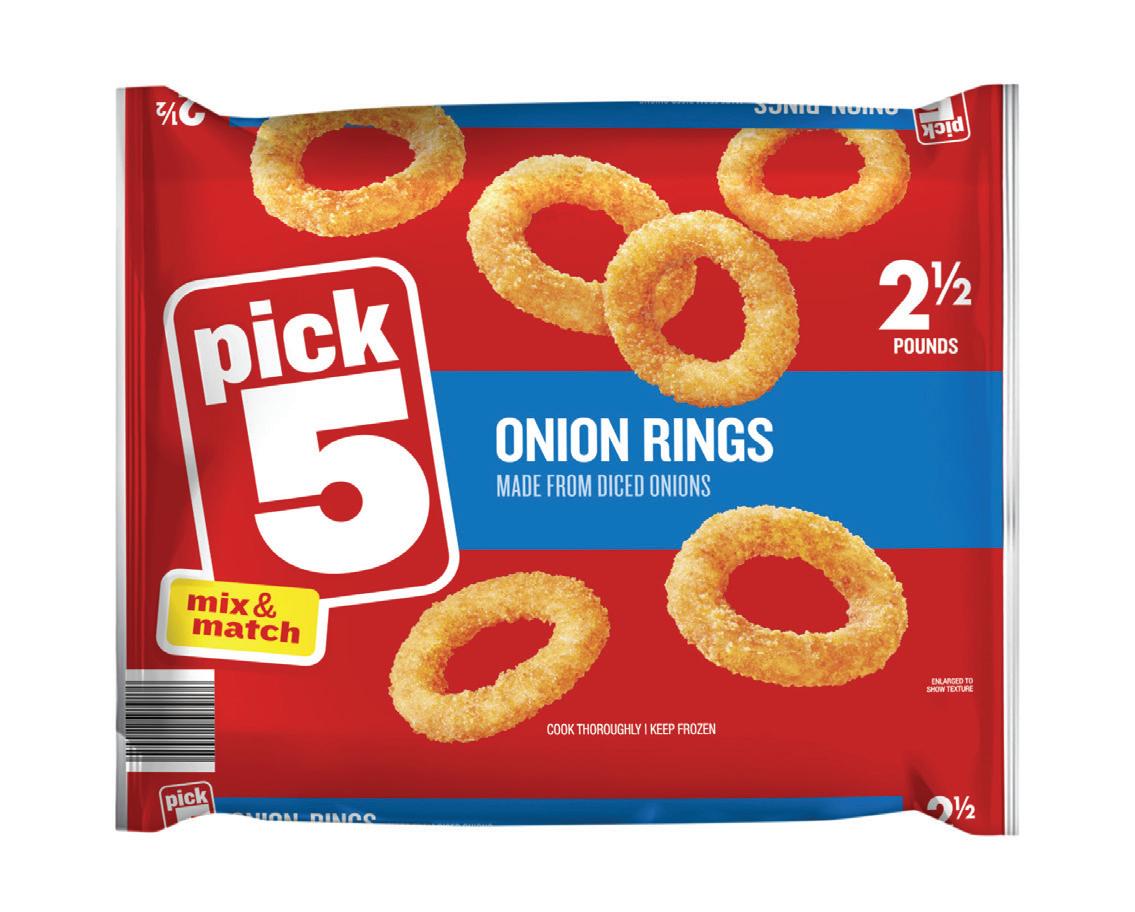





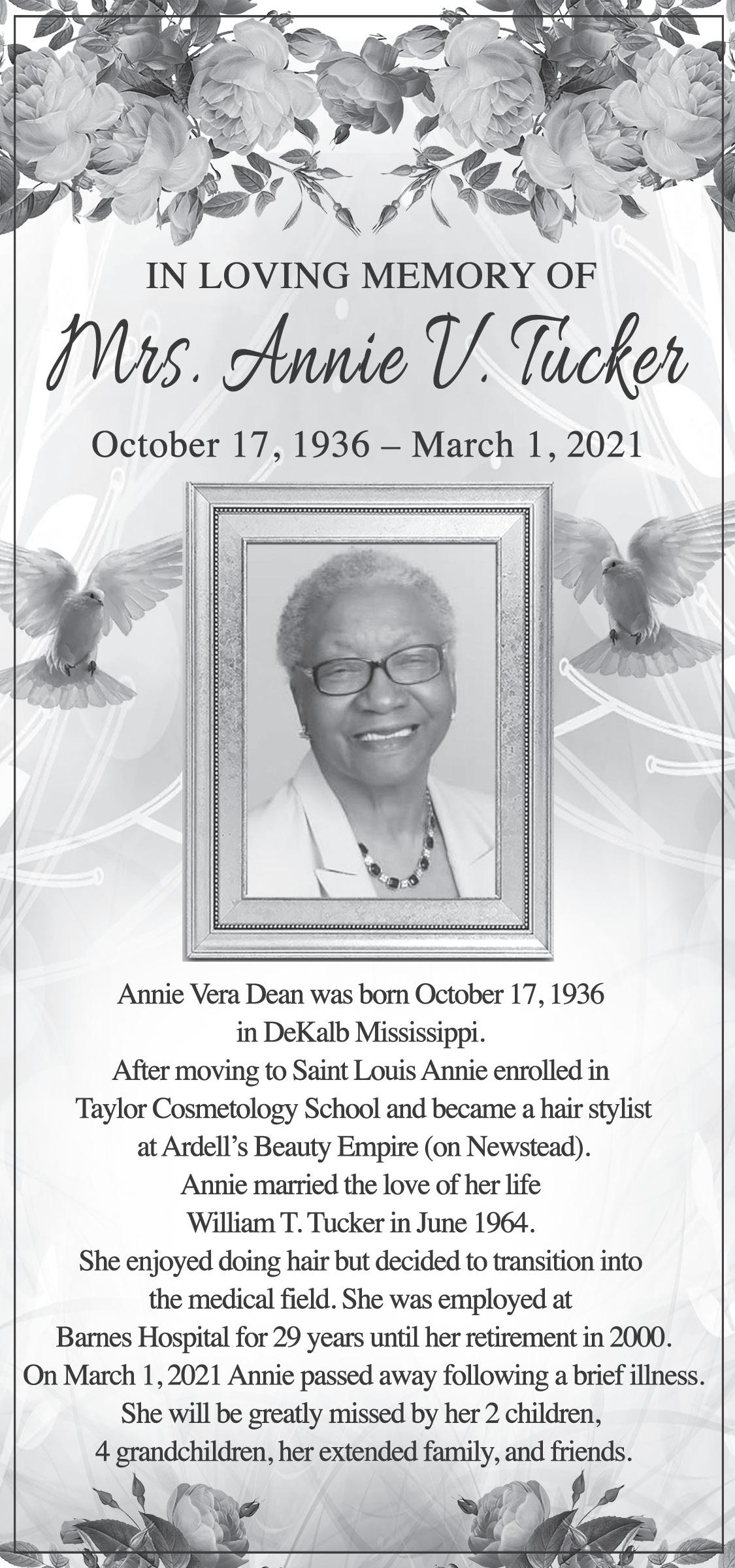

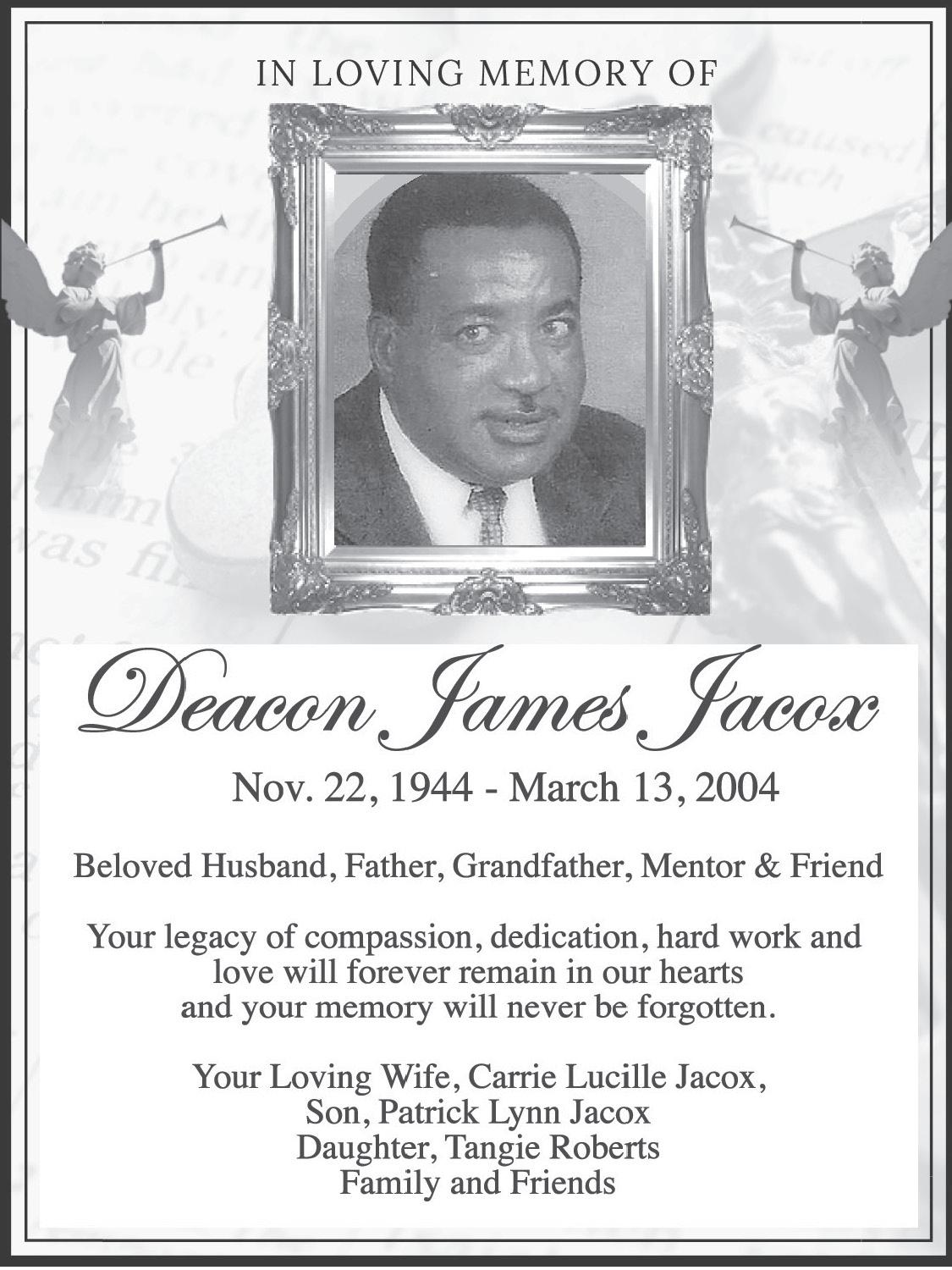

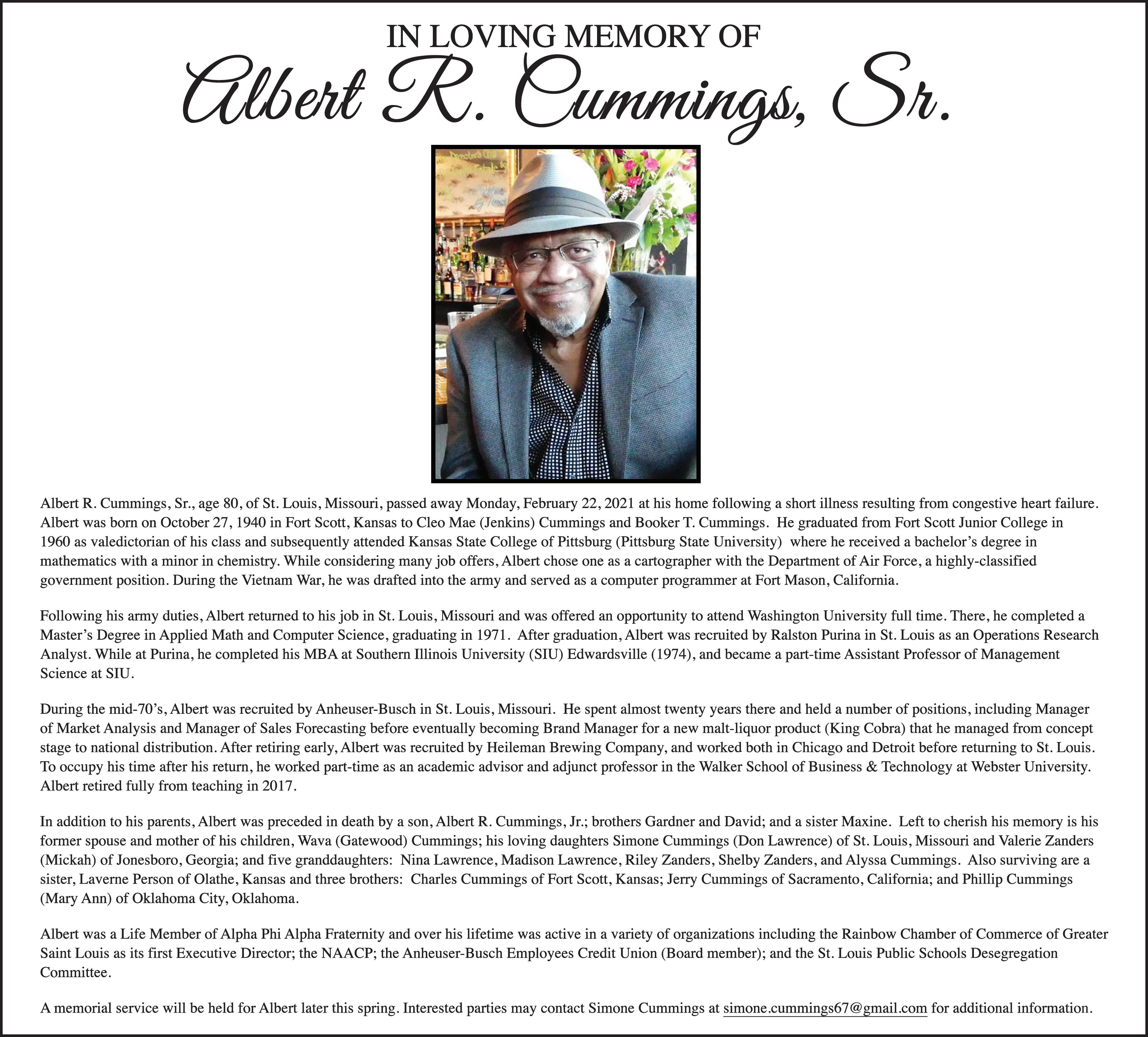




Kavin Swan wants public to learn from his close call and take virus seriously
By Sylvester Brown Jr.
The St. Louis American
A year ago, this month, Kavin Swan, 65, an executive with HOK, an architecture, engineering and urban planning firm, was living his normal, busy life. He traveled extensively to cities like Seattle, Reno, Atlanta and Houston, meeting with airport executives, overseeing projects and attending crowded conferences. The virus was spreading globally, but Swan wasn’t overly concerned. This was around the time former President Donald Trump insisted his administration had “tremendous control” over the disease. Even though there were
100,000 confirmed coronavirus cases in the U.S. at the time, Trump insisted there was no need to shut the country down, predicting churches would be packed by Easter Sunday.
“Just tell the people the truth, man!” Swan said, referring to Trump’s comments last year. “There I was going to conferences with a thousand people, shaking folk’s hands. I probably would have never taken those trips if I had known better.”
If he had known better, Swan might have been able to avoid what happened when he returned home from a trip in late March 2020. First came the chills, later a fever,
Christian Hospital offers in-person appointments for nearby residents
By Sandra Jordan Of The St. Louis American
Christian Hospital in North St. Louis County is setting aside a couple of hours after work on Tuesdays, and a couple of hours after church on Sundays, for individuals who live nearby and don’t have internet access or are uncomfortable with technology, to make an appointment to get the COVID-19 vaccine.
“The purpose of this is to target those non-digital people in the community that may not be able to sign up electronically, and particularly in ZIP codes or areas around the Christian Hospital Northeast service area,” Jacqueline Randolph, executive director of Ambulatory
Services at Barnes-Jewish Hospital, said.
“We noticed that in particular ZIP codes and patient populations, we were not getting the response rates that we would like to see in those communities where we knew that COVID was very prevalent and it was a high-risk population that we wanted to make sure that we targeted.”
While people who lived near the hospital were not signing up for the vaccine – people who did not live in North County knew about it and came to Christian to get their COVID vaccine.
“People who were being vaccinated at Christian Northeast were not from those ZIP codes; they were coming from West County and other places and that’s what
See CHRISTIAN, A15
then consistent coughing. After hearing of his symptoms, Swan’s primary care physician at BJC strongly suggested he get himself to the emergency room. He did. The doctor’s suspicions were confirmed: Swan was diagnosed with COVID-19.
Quarantined in a shuttered emergency room, surrounded by practitioners wearing what Swan described as “space suits,” he wondered if he’d ever see his wife or his grown daughter again.
“I was thinking: Do I have my affairs in order? Will everyone be alright? All kinds
See SWAN, A15
At Kids Win Missouri, we envision a state where all children have the opportunity to be healthy, happy, and successful. That’s why we supported Medicaid expansion on the ballot last August – because we know that by expanding Medicaid in our state, Missouri’s kids will win BIG. Although expansion is targeted to uninsured adults, research has shown unequivocally that Medicaid expansion is a good deal for our youngest citizens, too.
In states that have expanded Medicaid, more children have health insurance and more parents and children have access to care.
Missouri estimates that over 275,000 residents will gain access to health insurance coverage through expansion, including tens and thousands of parents. Medicaid expansion is not only good for the adults who will gain health coverage, it also boosts coverage for kids.

States that have expanded Medicaid have found that when uninsured adults gain access to health care, they are more likely to address health issues, seek preventive care, fill needed prescriptions, and report feeling healthier. When those uninsured adults who gain coverage are parents, they are also more likely to ensure their children get the necessary preventive care to stay healthy, too. Georgetown Center for Children and Families just released a new report last week that reaffirmed all of these findings, too, with more years of data analysis comparing states that expanded Medicaid versus those who have not.
Implementing Medicaid expansion will make Missouri a better place for moms and babies.
Our infant and maternal mortality rates in Missouri are alarming, and we know there are significant disparities in health outcomes for Black and Brown mothers and infants compared with white mothers and infants. States that have expanded Medicaid saw a 50% greater reduction in infant mortality and reduced rates of maternal death compared to non-expansion states. Medicaid expansion will save the lives of moms and babies in our state, and when we ensure moms are supported with

from around
were at the North County Recreational Complex in North county on Saturday that offered one of the region’s first doses of the Johnson & Johnson one-shot coronavirus vaccine. Two thousand doses of the new vaccine were available at the North County site.

Continued from A14
threw a flag for us,” Randolph said. “Why aren’t we getting people from right here within the Christian Hospital service area registered, scheduled and vaccinated?”
To address that issue, Randolph said they began in-person signups last week. Last Sunday, she said Christian Hospital registered more than 200 nearby residents during its
first soft-launch COVID vaccine registration event. Persons who are making the appointment for a COVID vaccine must also be within the state’s approved phases and tiers for COVID vaccinations to come in-person to make their inoculation appointment – currently at Phase 1B Tier 2 – persons age 65 and older and persons ages 18 to 64 with health conditions making them high risk for severe COVID-19 outcomes, expanding to Tier 3 on March 15, the state previously announced.

When Phase 1B Tier 3 is activated in Missouri, the state estimates it will make an additional 550,000 persons eligible to get the COVID vaccine. This group includes persons who are working in K-12 education, childcare, communications infrastructure, dams, energy , food and agriculture;
n In-person sign up for COVID vaccine at Christian Hospital Dietrick Bldg. Lobby
Sunday 2 p.m. to 5 p.m. Tuesday, 5 p.m. to 7 p.m.
government, information technology, transportation, water and wastewater systems, nuclear reactors, materials and waste; and others in what the state describes as critical infrastructure (https:// covidvaccine.mo.gov/priority/ Phase1b/#phase1b-30). Barnes-Jewish has also
opened up in-person signup for COVID vaccine appointments in Ellisville and other locations, including the Metro East.
“We have several sites,” Randolph said. “Over in Illinois, the Memorial Belleville location, a location in Alton, the main campus of Barnes-Jewish Hospital – so we’ve got them all over.”
To make an appointment in-person for a COVID vaccine at Christian Hospital, individuals can go to the lobby of the Dietrick Building only on two days – Sundays from 2 p.m. to
5 p.m. or on Tuesdays from 5 p.m. to 7 p.m. “If they meet criteria, we are giving them an appointment when they are there,” Randolph said. “If they do not (meet criteria) then, yes, we take their information, and then we manually put it in the system and preregister them so they can be contacted in the future. We ask for a good phone number.” Tech savvy counterparts can preregister themselves online to get the vaccine at Christian Hospital at https://bit. ly/3btmZiQ.
Only 5.2 % of Black residents have received their first vaccine
By Rebecca Rivas and Tessa Weinberg Of The Missouri Independent
When the pandemic hit St. Louis last March, it soon became clear that the majority of COVID hospital patients were coming from north St. Louis — where the state’s largest Black population is.
“That is concerning,” Dr. Alex Garza, the incident commander of the St. Louis Metropolitan Pandemic Task Force, said in April. “That shows the disease does disproportionately affect those that are disadvantaged in society.”
Black residents were being infected at a rate four times higher than white residents, according to St. Louis County’s calculation in early April. And in St. Louis city, the first 12 COVID-related deaths were all Black residents.
Despite this revelation, north St. Louis continued to lack access to COVID-19 testing for months following the onset of the pandemic.
Health centers that serve the area sounded the alarm on the need for a steady supply of COVID tests from local and state agencies.
“Our patients were coming in, some were showing symptoms, and we were sending them to the emergency rooms,” said Angela Clabon, CEO of CareSTL Health, a Federally Qualified Health Center (FQHC) that provides affordable healthcare to underserved communities in north St. Louis city.
One year from the state’s first reported COVID-19
Medicaid
Continued from A14
high-quality health care before, during and after pregnancy, we can help ensure a healthier start for our children.
Continued from A14
of stuff ran through my head while I lay there thinking, ‘This might be it.’” While he was recuperating in April, Trump was still downplaying the severity of the virus and recommending bizarre therapies, such as injecting ultraviolet light or disinfectants inside the body. The news was too much for Swan. “I had to stop watching after a while. I’d got so worked up, so emotional. This disease is so dangerous, and it was all handled so poorly. Honestly, I’m a little angry about that,” he said. Swan likened the virus to a
infection on March 7, 2020, the same dynamic is now playing out with vaccinations.
Black Missourians have contracted and died of COVID at rates higher than their share of the population. Yet, only 5.2 percent of Black residents have received their first COVID vaccine dose, compared to 13.5 percent of white residents, according to the state’s dashboard as of Saturday.
Analyses have found that the largest “vaccine deserts” — or areas with little to no access to the vaccine — are in the city centers, the areas with some of the most vulnerable populations and where Black populations are the highest.
It’s emblematic of how inequity is built into the system, said Serena Muhammad, the managing director of the COVID-19 Regional Response Team, which is tasked with addressing structural inequities in the pandemic response in the greater St. Louis region.
“Everything favors folks who have transportation, insurance, money — whatever that privilege category is — and everybody else is left out and scrambling. That’s across the board, across time,” Muhammad said. “So the fact that we are as unprepared as we are, is really an indication that we’ve never really intended to fix it.”
Clabon, the CEO of CareSTL Health, said many residents she’s spoken with who are eligible to receive the vaccine — based on their age or chronic health conditions — aren’t even aware they qualify.
It’s made Clabon even more
Our children deserve every dollar of our investment.
Every year that Missouri passed by the opportunity to expand Medicaid, we left dollars on the table that would have improved the health and lives of our fellow Missourians. With expansion
stealth invader.
“It’s a sneaky mean disease It’s almost like it has a brain. It moves around very quickly to different parts of the body like it knows your weak areas,” Swan explained. “Once you get your fever under control then it moves to another part of your body, particularly at night when you go to sleep. If my wife hadn’t woken me up to take my temperature or put ice on my head…I probably wouldn’t be here today.”
The advice from his attending physician, who also had COVID last year, was helpful. The attendee told Swan to stay vigilant and not let the disease beat him. He was advised to sleep on his stomach to keep his lungs clear, keep moving, walk around the house and sanitize everything. Swan

concerned about getting clear information out to Black residents in St. Louis city, and that includes having more points of access for them to seek out a vaccine, Clabon said.
“The message is actually not getting out to them,” Clabon said. “And if they qualify, they have nowhere to go. So that’s the other issue.”
The Champion Program
Nearly every day for the past year, Muhammad has worked alongside Rebeccah Bennett, managing director for the COVID-19 education campaign Prepare STL, to address inequities in the region’s pandemic response.
And that work has only increased with the vaccine
going into effect this year, we have an opportunity to bring over $1 billion back to the state of Missouri annually to further support children and families here. As Congress debates another round of COVID relief and considers adding greater incentives for not-currently
describes himself as “a pretty good athlete” who jogs, swims, bicycles, and golfs. He kept pushing himself into recovery.
“By the end of April, I could walk a mile or so without losing my breath. I was back!” Swan may have been back physically, but there was emotional damage. People who’ve contracted the disease can be reinfected. Doctors say the immune system’s memory is like our own - it remembers some infections but can forget others. Swan recalled how he grappled with his fears of reinfection.
“It keeps you up at night… the fact that I could have died. You have a lot of PTSD (post-traumatic stress disorder) up until you get some assurance, which is the vaccine.”
rollout.
In September, they started to get lots of requests from their medical and health partners asking for their help in convincing the minority community to get vaccinated.
“We took a step back and said, ‘Well, that doesn’t sound like a direction that we want to head in,’” Muhammad said. And there were many reasons for that.
“One of the reasons why many African Americans are not leaning in is because of historic racism, continuing racism, a history of medical experimentation and experiences of medical trauma,” Bennett said.
In all those instances, African Americans’ agency to make their own choices was compromised, Bennett said. So
expanded states, including states that have approved but not implemented expansion, our state may end up reaping even more cost-saving benefits than we knew of in August.
To build and support strong families, we need to ensure that parents and children have
Swan was shocked when his wife shared social media stories about people refusing to wear face masks or saying they were not going to take the vaccine when it became available. These sentiments were particularly disturbing coming from Black people.
“When you look at the death toll (from COVID-19) it’s us, we’re at risk,” Swan said with frustration. His daughter, a child psychologist, suggested the best way for Swan to tackle his feelings of COVID-related PTSD was to talk publicly and honestly about his experience. Referring to himself as a “top-down/bottom-up kinda guy,” Swan reached out to Richard J. Liekweg, president and chief executive officer of BJC HealthCare, and asked
University of Missouri Sinclair School of Nursing student Hannah Tipton administers a COVID19 vaccine to Clifford Nevins during MU Health Care’s vaccination clinic in the Walsworth Family Columns Club at Faurot Field in Columbia on Feb. 4, 2021.
the organizations decided to focus their message on choice and general health wellness.
“We really wanted to hold a space for sharing factual information, for having safe conversations, where people can ask questions, and they could trust that we were providing neutral information,” Muhammad said about the vaccine.
The pandemic has impacted every aspect of people’s lives, so Bennett and Muhammad realized they needed to “draw a wider frame.” Having a conversation about whether to take the vaccine also required talking about the ways COVID is undermining overall wellbeing.
“Even if you got a vaccine, chances are issues around economic stability, issues around
access to health and mental health care benefits. Healthier parents and children will build healthier communities throughout our state. We can’t wait to look back in a few years to see the trends improving again, and knowing that we’ve done all that we can to ensure kids and
what he could do to help. Liekweg put Swan in touch with his marketing team. They arranged media events for him to share his story and encourage others, namely African Americans, to take the pandemic seriously, focus on prevention and get vaccinated.
Swan recently received the vaccine. He’s been volunteering at BJC HealthCare’s COVID-19 vaccination clinic at Christian Hospital. He’s doing all he can to defeat the “sneaky, mean disease” that almost took his life.
Surviving, Swan confessed, has changed his outlook on life.
“Coming out of this, I’m very present about my life. I’ve become a better listener, I’m a lot humbler, more prayerful. My job was pretty
housing security, issues around food security, issues around trauma and loss — all those things don’t magically go away because you get a shot,” Bennett said. PrepareSTL and the Regional Response Team have teamed up to work to give residents’ agency in making that decision in a peer-to-peer outreach program.
Their model is to hire 300 “community health champions,” provide training and pay them $200 each to have conversations with 20 people each — facilitating at least 6,000 conversations.
“People are experiencing this crisis for real, so we are really redistributing money in ways that support our community members,” Bennett said. It’s a proven model they’ve already used to facilitate education about COVID and to distribute masks and protective equipment. To date, they’ve already distributed $150,000 in stipends to community members.
What Bennett and Muhammad found most successful throughout the year is hiring people from the community who have relationships with those most vulnerable.
“We got a whole bunch of healthcare experts who want to get to vulnerable Black folks and brown folks, but they don’t have [a]relationship,” Bennett said. “They have knowledge, but they don’t have proximity often. And even if they have proximity, they may not have trust.”
Edited for length / Reprinted from the Missouri Independent.
families have a chance to be healthy, happy and successful. In Solidarity, Casey Hanson Director of Outreach and Engagement, Kids Win Missouri
stressful. I was running so fast and doing so much. Now I’ve slowed down. I enjoy the moment, you know?”
It’s been a year since Swan’s bout with COVID-19. More than 500,000 Americans have succumbed to the disease since then. Swan said he’s
“one of the lucky ones.”
“I got a break, a second chance. I’m a firm believer in that old phrase: ‘To whom much is given, much is required.’ I’ve been given a second chance at life, so, call it what you will: a calling, a responsibility, whatever. I just think if I can help somebody understand how serious this thing is, I’m going to do that.” Sylvester Brown Jr. is The St. Louis American’s inaugural Deaconess Fellow.

Planting the Seeds for Success!
The weekly Healthy Kids page provides health tips on nutrition, exercise and more.


PRESENT:
PRESENT:
calcium include:
In our “Super-Size” world, we can easily lose track of what an actual serving size means. When reading labels on a food or drink product, you can determine the nutrients, sodium, fiber, sugar and calories of a serving size. But be careful; just because it looks like one small bottle
are popcorn, wheatberries, brown rice and wild rice.
> Milk – 8 oz. (300 mg)
INGREDIENTS:
We each need at least 3 servings per day of whole grains. But what does that mean? How can we know what foods contain whole grains?
Look at the ingredients list of a package of food you are about to eat. If the word “whole” is used, then there is most likely a whole grain ingredient. A few items that don’t use the word whole
Your body uses calcium to build strong bones. By the time you hit the age of 20, your bones have usually completed their growing. So it is during your school years that you need to give your body the most calcium. Drinking soda not only reduces the amount of calcium you consume, it also affects how your body absorbs the calcium you do get.
Getting plenty of whole grains in your diet can improve your health and reduce your chance for some chronic illnesses such as stroke, diabetes, heart disease and high blood pressure. Visit wholegrainscouncil.com for more information.
Cottage Che e
> American Cheese – 2 oz. (300 mg)
of soda — it may not be considered one serving size. For example, a 20-oz bottle contains 2.5 servings. So if the bottle states “110 calories per serving,” that means the entire bottle contains a total of 275 calories! Remember to watch those serving sizes and you’ll have better control over what you’re eating and drinking.
> Cottage Cheese – 4 oz. (70 mg)
Look for “calcium-fortified” foods and beverages to boost your calcium intake.
Daylight Savings starts 3/14/21
can be dangerous for several different reasons.

As spring approaches, warmer weather allows us all to get more outdoor exercise. Here are some ways to become a more active person.
Learning Standards: HPE 2, HPE 5, NH 1, NH 3, NH 5
It’s important that before you embark on any kind of exercise to remember two things: warm up and cool down. Start with some slow stretches and movement (like walking) to increase your heart rate a little. Warm up for a good five minutes before increasing your heart rate.
The Institute of Medicine recommends that kids between the ages of 9 and 18 years should eat and drink at least 1,300 milligrams of calcium each day. Some great sources of
Learning Standards: HPE 2, HPE 4, HPE 5,
Secondly, when you are finished with any kind of strenuous (very active) exercise, take some time to cool down. You can slowly stretch your arms and
FYI— If you choose lowerfat skim milk, it has the same calcium as whole milk!
Learning Standards: HPE 2, HPE 5, NH 1, NH 5
legs again, and continue with reduced speed movements until your heart rate begins to slow down.
Melissa Douglass, MSW
Deborah Edwards, School Nurse
Christina Palmer, RN, ADN
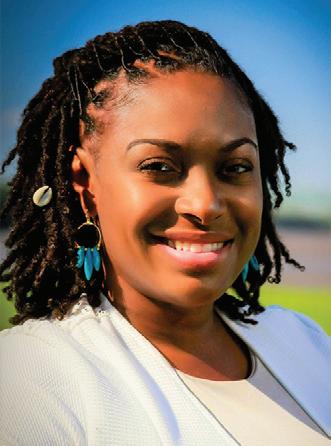

Where do you work? I am a school nurse at Monroe Elementary School.
Where do you work?
Here’s a fun way to do just that. Pay attention to what time the street lights come on tonight. Now each night after that see how much later they come on.
Instead of playing video games — play baseball, football, badminton, or some other active game.
Make it a goal to add that much time to your outdoor active play.
Instead of surfing the ‘Net — go for a brisk walk around the neighborhood.
This weekend we’ll all turn our clocks forward an hour, resulting in more daylight in the evenings. Use that extra hour to increase your outdoor playtime. As it stays lighter later and later, you can take advantage of this extra time to get plenty of exercise.
> NEVER walk on a “frozen” pond, lake, river or any other body of water. Just because it looks frozen does not mean it is safe.
Break into small groups and define what it means to be a bully. Share your ideas with the class. Did you have the same things listed (as the other groups) that you would consider as bullying behavior? Now back in your groups, create a newspaper ad that includes at least two of the following:
> If you are with someone that falls through the ice, first run (or call) for help. Do not try to go out onto the ice to help your friend. You can fall through the ice too.
> How bullying hurts others.
> What to do if you are bullied.
> When walking on icecovered roadways or sidewalks, take baby steps. Walk carefully and slowly.
With the warmer weather and increased daylight, there’s no excuse to not
What is diversity? As a class, discuss what you think it means. Is it the differences in how we look or act? Is it the differences in where we live, work or go to school?
get in at least 30 minutes of exercise every day. Why not try for a goal of 60 minutes at least 4 days per week? You’ll look and feel better!
Where did you go to school? I graduated from Sumner High School. I then earned Associate Degree in Nursing from Forest Park College and a BS in Business Administration from Columbia College.
Where do you work? I am the founder and distance counselor for Goal Driven Counseling, LLC. Where did you go to school? I graduated from Whitney Young Magnet High School in Chicago, IL: same as former first lady Mrs. Michelle Obama. I then earned a Bachelor of Science in Social Work, and a Master of Social Work from the University of Missouri – St. Louis. I also completed two more years of supervision and exams to become a Licensed Clinical Social Worker in the state of Missouri.
I am a registered nurse at BarnesJewish Hospital. Where did you go to school? I graduated from Mehlville Senior High School. I then earned an Associate Degree in Nursing from Webster University and I am currently enrolled in a Bachelor of Nursing program.
Instead of watching TV — ride your bike with friends. Can you think of other ways to be more active? Going outside and staying active not only increases your heart rate and burns calories, but it also helps you build friendships!
This warm-up and recovery period is important for your heart health. It also helps to reduce the amount of muscle pulls and strains.
Learning Standards: HPE 2, HPE 4, HPE 5, NH 1
Learning Standards: HPE1, HPE 2, HPE 5, NH 1, NH 5
Learning Standards: HPE 2, HPE 5, NH 1
> What to do if you see someone else bullied.
> What to do if YOU are the bully.
Look through the newspaper for examples of ad layouts and design. Discuss the words “compassion,” “empathy” and “sympathy.” How do they each play into your response to bullying at your school?
Break into small groups and create two lists: what everyone in the group has in common and what are the differences.
> Also — remember to look up! Icicles injure numerous people every year. If you see large icicles forming over your front steps, ask your parents to use a broom handle to knock them off to the side before they break loose from your gutters.
> What other ice hazards are there?
Is it bad to be different? What are some advantages to being around people that are different than you?
Learning Standards: HPE 2, NH 2, NH 4
Learning Standards: HPE 2, HPE 5, NH 4
Learning Standards: HPE 2, HPE 5, HPE 7, NH 5, NH 7
What does a Licensed Clinical Social Worker do? I use technology to help teens and young adults explore their emotions, better understand their feelings, work through relationships, and address common challenges completely online through a computer, tablet, or smart phone. Similar to a Facetime call, I support and guide my clients from the comfort of their home or private location where they are comfortable
What does a Registered Nurse do? My main goal is to ensure my patients’ safety. I accomplish that by being their advocate and providing excellent care. Whether it’s passing meds, educating them about their health, or sticking them to check their blood, it’s all done with love!
Ingredients: 8 Saltine crackers
Ingredients:
Ingredients:
1 15-Oz Can Garbanzo beans
1 Large Jicama
1 Garlic clove, crushed
3 Slices Ham Whole grain mustard (optional)
1 Tbsp Honey (optional)
2 Tsp Cumin, 1 Tsp Olive oil, ½ Tsp Salt Directions: Combine all ingredients in a blender until smooth. Enjoy with baked tortilla chips or raw vegetables.
Directions: Spread peanut butter on four of the crackers and top with sliced strawberries. Drizzle with honey and top with the other crackers to make four cracker-wiches.
Directions: Slice jicama into thin “sticks” and cut ham in half. Wrap ham around jicama sticks and dip in mustard.
What does a school nurse do? I assess the concerns of students who are ill, injured or experiencing alterations in their normal health. Nurses screen daily staff, students and visitors for safety. Monroe School is a pilot school for Covid-19 test sites in partnership with the city. Why did you choose this career? I love nursing because there are many opportunities in hospitals, schools, clinics and offices, insurance, legal and research. My passion is working in the schools with students, parents, staff and community partners.
Why did you choose this career? This career chose me! I have always been the type to want to care for people, and be there to support people, so what better way to accomplish that than by being a nurse. It also runs in the family. I come from a long line of compassionate people, and that’s exactly what you need a lot of, to survive in this field.
Why did you choose this career? I chose this career because I enjoy being a support to teens and young adults in a very challenging phase of life that can be overwhelming. I enjoy teaching them how to best take care of themselves so they can live healthy and fulfilling lives.
What is your favorite part of the job you have? I enjoy when a child tells you, “I want to be a nurse.” And best of all, I love the smiles, hugs and “thank-yous”.
Learning Standards: HPE6, NH3
What is your favorite part of the job you have? I love that my job makes talking about mental health not as scary and even makes it kind of cool. I love that I get to build valuable relationships with so many people that trust me to be there for them. I love that no matter where my clients are, we can simply connect with a video call and I can not only support them through hard times, but lots of good times as well.
What is your favorite part of the job you have? My favorite part of the job is seeing my patients getting better. I also love to make them laugh and smile, even if that means telling a random joke, or hitting a two-step; we always have fun.
Learning Standards: HPE6, NH3
Learning Standards: HPE6, NH3
“Questions or comments? Contact Cathy Sewell csewell@stlamerican.com or 314-289-5422
“Questions or comments? Contact Cathy Sewell csewell@stlamerican.com or 314-289-5422
“Questions or comments? Contact Cathy Sewell csewell@stlamerican.com or 314-289-5422






The St. Louis American’s award winning NIE program provides newspapers and resources to more than 8,000 teachers and students each week throughout the school year, at no charge.

Ava Johnson, 5, is in full laboratory gear as she completes a project that nurtures her scientific curiosity.


A satellite is an object that orbits around planet. Some satellites, such as moons, occur naturally in our solar system. Other satellites are man-made. Since 1957, there have been thousands of satellites launched.

Satellites are built to be as strong and light as possible. They come in many different shapes and sizes, but each satellite has a platform, an antennae, and a power source. Sometimes the power source is battery generated, sometimes it is solar powered from the sun. Most satellites are sensitive to extreme heat and cold, so their design has to protect from the heat of the sun, and when it is cold. Layered blankets that resemble aluminum foil keep heat in, while radiators release heat. They are used for many purposes,


Background Information:
Have you ever wondered about meteorites? In this experiment, you will collect meteorites and examine them.
Materials Needed:
• Bowl • Fine Fabric • Water • Magnet Process:
q Fill the bowl with water and leave it outside for several days.
w Remove particles such as leaves and insects. Use the fabric to filter

Did
about speed. Speed = distance divided by time.
z If you live ½ mile from school and it takes you 10 minutes to walk to school, what speed are you walking? ______ mile per minute, ______ miles per hour
such as collecting data. Satellites measure gases, monitor wildfires and volcanoes, and provide information about clouds, oceans, land and ice. According to NASA, “All this information helps scientists predict weather and climate. The information also helps public health officials track disease and famine; it helps farmers know what crops to plant, and it helps emergency workers respond to natural disasters.”
To Learn More About the Different Types and Uses of Satellites, Visit: http://satellites.spacesim.org/english/ function/index.html.
for main idea and supporting details. I can make text-to-world connections.


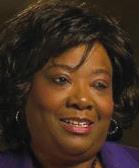
Jocelyn Harrison was born in 1964 in Chattanooga, Tennessee. She followed her passion for science and exploration to earn a bachelor’s degree in Chemistry from Spelman College in 1987. Later that same year, she earned her bachelor’s degree in Chemical Engineering from Georgia Institute of Technology. Harrison stayed at Georgia Tech to earn her master’s degree and doctoral degree in Chemical Engineering. She finished her education in 1993.
After earning her doctoral degree, Harrison worked at NASA’s Langley Research Center in Virginia. Concerning her research Harrison has stated, “We’re working on shaping reflectors, solar sails and satellites. Sometimes you need to be able to change a satellite’s position or get a wrinkle off of its surface to produce a better image.” Harrison’s research has also helped to produce parts for robotics, heart pumps and audio speakers. In 2009, she became the manager of the Low Density Materials program at the Air Force Office of Scientific Research in Arlington, Virginia. While there, she worked to reduce the weight of aerospace systems and improve their effectiveness.

the remaining contents in the bowl. Let the contents air dry. There should be small black particles.
e When the particles are dry, hold the magnet above them. The particles that are attracted to the magnet are small meteorites.
Learning Standards: I can

Harrison received patents for her inventions, and numerous awards, including the 1996 R&D 100 Award presented by R&D magazine, NASA’s Outstanding Leadership Medal, NASA’s Exceptional Achievement Medal, and the Technology All-Star Award from the National Women of Color Technology Awards.
Learning Standards: I can read a biography about a person who has made a contribution in the fields of science, technology, engineering, and math. I can make text-to-world, text-to-text, and text-to -self connections.

x Your family is traveling by car to visit relatives who live 360 miles away. It takes your family 6 hours to arrive. How fast were you traveling? miles per hour. If you continued at the same rate of speed, how many more miles could you expect to travel if you drove another 2 hours? miles c The length of a marathon is 26.2 miles. If a runner finishes the race in



If you put all of the
that our

Enjoy these activities that help you get to know your St. Louis American newspaper.
Activity One —
Relevant Information:
Find an interesting news story to evaluate. Read the story and identify the main ideas. Number the main ideas in order of importance. Explain why you chose that order.


Activity Two — Future
Artifacts: Artifacts help us learn about our history. Locate a picture of something in the newspaper that could someday be used as an artifact. Paste the picture on a piece of paper and write about what future scientists could learn from the artifact.
Learning Standards: I can use text features to locate information in a newspaper. I can evaluate main idea and supporting details. I can make text-to-world connections.


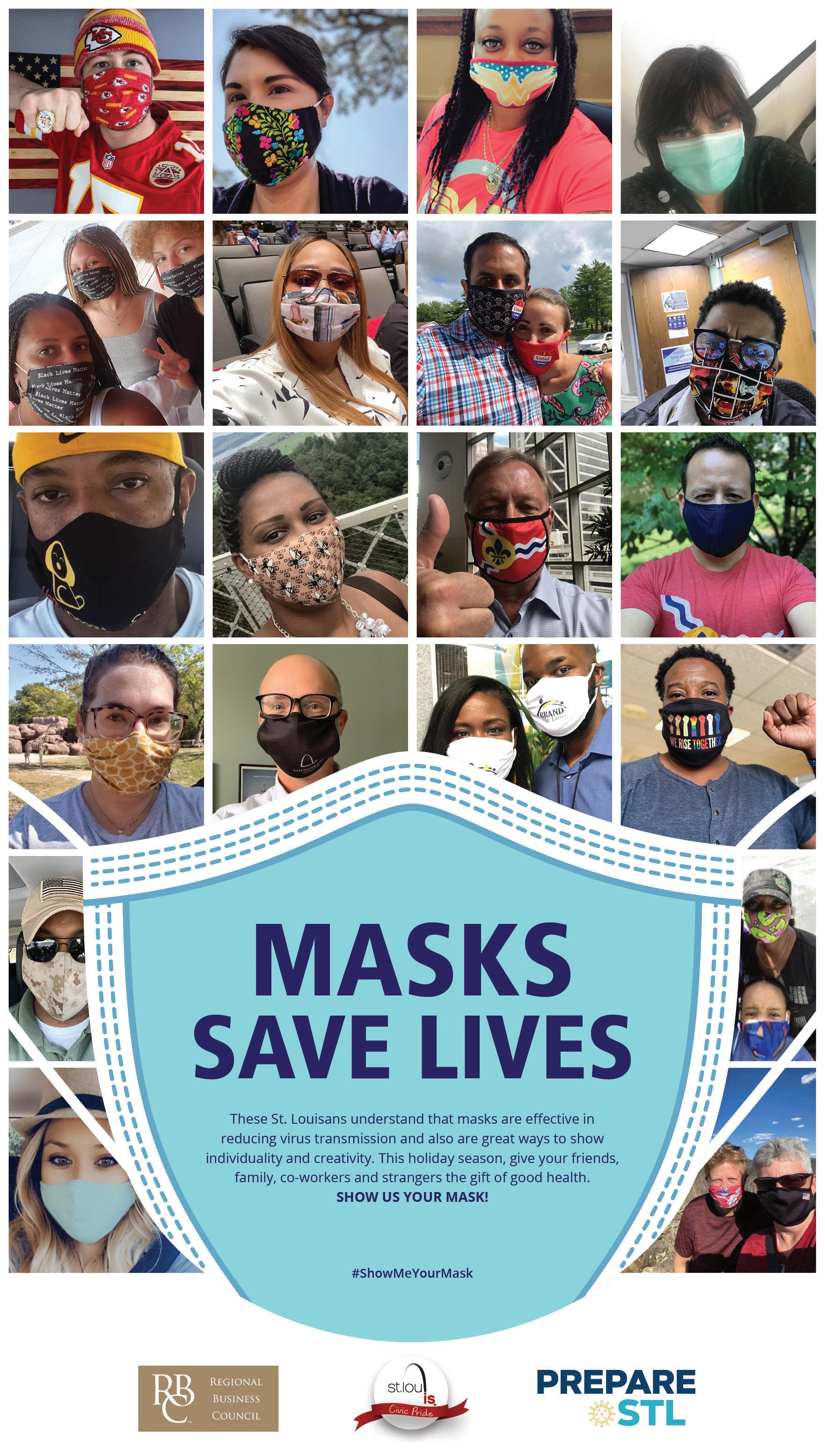

By Danielle Brown
Of the St. Louis American
“Everybody in St. Louis who eats fried rice knows exactly where Natural Bridge and Kingshighway is,” said Terrell “Young Dip” Evans. And if you went to Beaumont, Vashon, Sumner or a north county school, then you should rock with 314 Day.”
Evans, a popular host, DJ, and former radio personality, met with his mentors to reflect on what he wants his legacy to be. He decided to continue his entertainment career; he also wanted to establish a community-oriented initiative that would leave an influential imprint in the area. In the U.S., some Americans join in the celebration of March 14 as Pi Day, which symbol-
By St. Louis American staff
Bunny Wailer, named Neville O’Riley Livingston at birth, came to prominence as a reggae artist, a percussionist, and one of three singers who made up The Wailers, an iconic reggae trio. The group was co-founded with Bob Marley and Peter Tosh in Jamaica in 1963. The Wailers achieved international success with their album “Catch a Fire,” a classic known for helping popularize reggae music and Rastafarianism around the world.
Three-time Grammy winner Wailer was the last surviving member of the original group before he died on Tuesday, March 2, at Andrews Memorial Hospital in Jamaica. The cause of death was not announced; however, Wailer’s health was in decline for the last several years and he had a stroke this past July.
In 2017, Wailer received an Order of Merit from the Jamaican Government and the Reggae Gold Award in 2019.
Jamaica’s Minister of Culture, Gender,
izes the mathematical constant π (pi). It’s a day when people engage in various fun activities and take advantage of numerous food deals in the amount of $3.14. However, on March 14, 2006, Evans had other plans for the day and instead decided to create his own version of 314 Day. He stresses paying homage to St. Louis’ area code, serving as a local holiday to unify and promote positivity throughout the city.
“I really need the city to understand 314 Day was created to be a platform to unite the city and shine more light on it,” Evans said. “The day launched with a party designed to push the efforts of the 314 Day Foundation, which has the same mission.”
One of Evans’ mentors, Tatum Polk, a business owner in music and nightlife, believed in
Evans’ vision early on and helped orchestrate the monumental day.
“It’s more than a party, more than a dance, more than a hashtag, and more than a trending topic on Twitter, we live with pride for the city all year long and the date really resonates with us,” Polk said. “It’s about loving and learning the history of St. Louis and preparing for a better history of it in the future.”
Evans, a former foster kid and product of homelessness, grew passionate about giving back through the 314 Day Foundation after witnessing a friend live underground at the St. Patrick Center homeless shelter.
“That situation showed me that I have to do
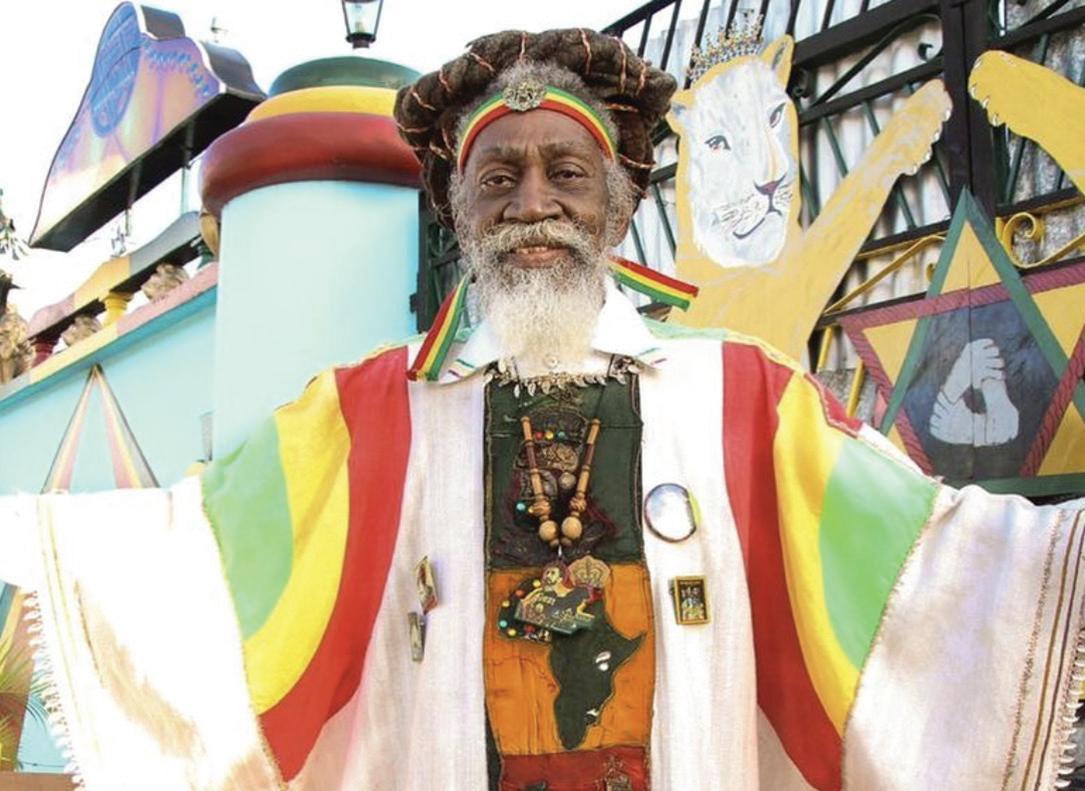
Bunny Wailer

Lloyd Nicks’ single “Never Fail” got a boost from St. Louis radio station Joy FM and is now reaching hundreds of thousands of listeners around the U.S.
By Evie Hemphill St. Louis Public Radio
At the start of the coronavirus pandemic, and after 10 years of pursuing music professionally, Lloyd Nicks couldn’t have anticipated the year 2020 being his biggest yet. But everything changed last summer when one of his songs hit the airwaves across the U.S.
“During quarantine I released ‘Never Fail,’ and it kind of just went crazy,” the Cahokia, Illinois, native told St. Louis on the Air
Somehow, Nicks explained, his single had ended up on desks at the local Christian radio station 99.1 Joy FM. “And they loved it,” Nicks said – so much so that he became the first local artist to get airplay on the station, as far as the station’s longtime staff member Sandy James can recall. Joy FM also shared Nicks’ track with the Christian radio music promoter 55 Promotions, which got it moving across the country to other stations. As of last week, “Never Fail” had risen to No. 37 on Billboard’s Christian Airplay chart, garnering hundreds of thousands of listens.

The song itself speaks to Nicks’ personal journey. The Chesterfield resident is now a worship leader at the Crossing, a church community that he credits as being his biggest advocate.
“I lost my mom to cancer five years ago on my birthday, and it completely destroyed my concept of reality,” Nicks said. “I’ve experienced some of the lowest moments of my life the past five years. But I can honestly say, through these five years, God has walked with me.
“He’s been constant with me. He’s shown me a measure of grace and peace that I never knew existed. And through this time, this song, it’s bigger than just a song to me. It’s my testimony that God never fails. He didn’t leave me in my despair; he walked me through it.”
In addition to “Never Fail,” Nicks dropped “Focus” last year, which he and a close friend wrote with the year’s crises in mind.
“I said, ‘How can we give some people some hope but also call out what we’re experiencing,” Nicks said, “[and] give them something to look for that surpasses everything that we’re seeing?’” Nicks said he grew up in a family that wasn’t particularly musical. He credited his Cahokia High School teacher Penny Zimmerman for setting him on his path and being “a second mom to me.”
“She just took me under her wing, and she nurtured me, and she taught me about the gift of music, which inspired me to go study music,” Nicks said.
He added that working within the genre of Christian music hasn’t been limiting but instead actually helps make him distinct.
“I’m not bound by my creativity because I’m labeled as a Christian artist,” Nicks said.
“In fact I think my creativity is actually expanded. And shout-out to my label Kingly here in St. Louis, holding down the fort in this area. [They] challenged me to think deeper and [to] bring some of those messages that are sometimes veered away from into Christian music and give it some hope – and also at the same time create a sound that is infectious entirely, not just Christian music.”
Republished with permission of content partner St. Louis Public Radio.



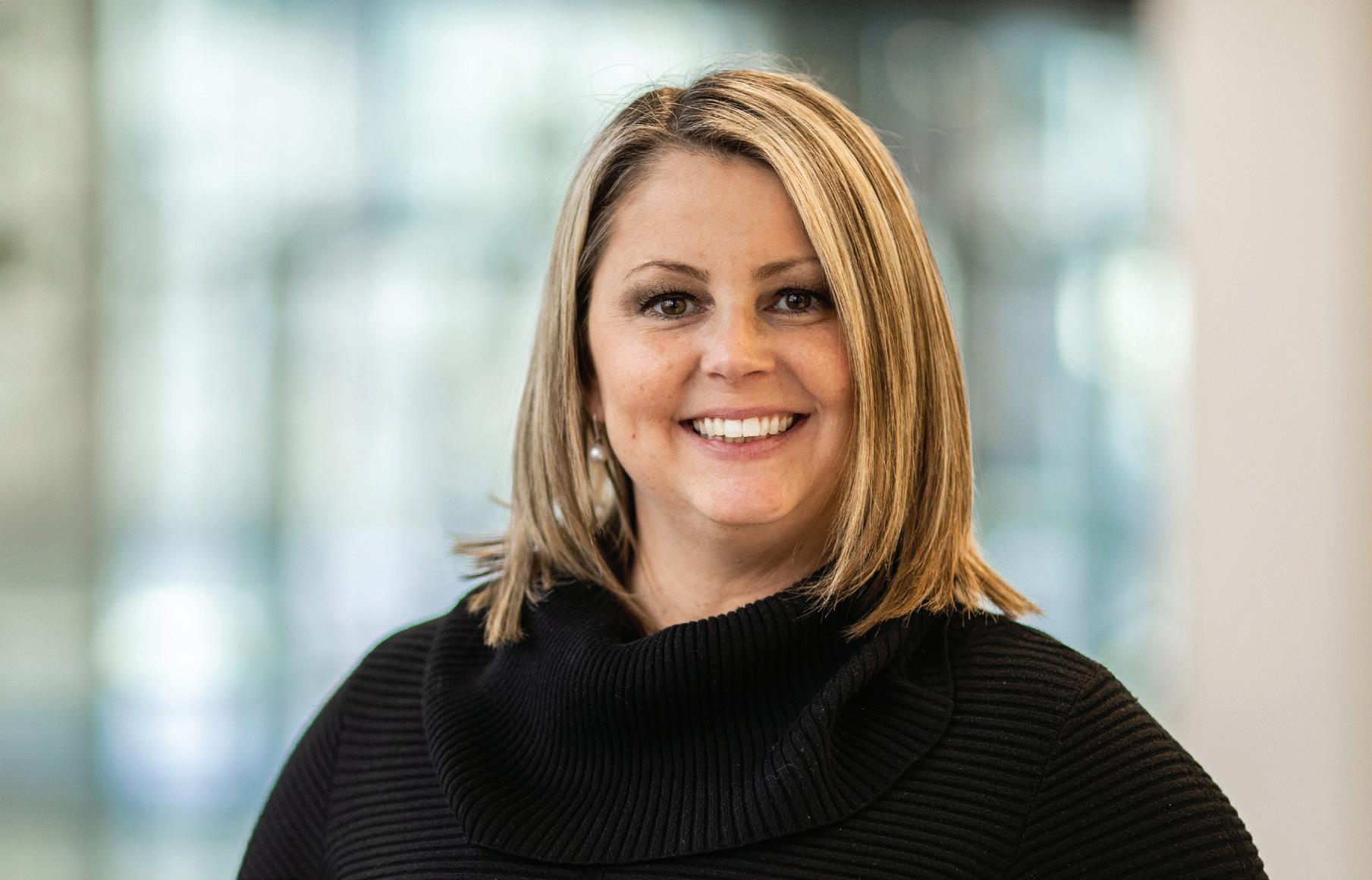
At Spire, we know providing exceptional service means bringing exceptional people together.
We’re looking to grow our customer experience team with qualified applicants in the following roles:
• Customer solutions representative
• Billing representative
In addition to working on a team that takes an innovative approach to customer service, you’ll receive competitive pay and benefits.
Ready to join our exceptional team?
Simply submit your resume to LmccLain@urbanleague-stl.org by March 16 to be considered for this opportunity.
Qualified applicants will be contacted to interview during the Spire virtual career fair hosted by the Urban League.
Virtual career fair
Thursday, March 18
9 a.m.–1 p.m.
For more information, please call 314-626-9977.

With Earl Austin Jr.

St. Louis area basketball stars Bradley Beal and Jayson Tatum share many things in common other than the fact that they were products of Chaminade College Prep. Both players led Chaminade to a state championship and were selected to play in the McDonald’s All-American Game. Both have parents who either played or coached sports at University City High. Both were selected for the Gatorade National Player of the Year Award. Both led the St. Louis Eagles to the national championship game of the Nike EYBL Peach Jam in Augusta, Ga. Both were selected with the No. 3 pick in the National Basketball Association Draft after one stellar year of college basketball.
The common bond between these two young superstars grew even stronger last weekend when they shared a spot in the starting lineup in the NBA All-Star Game in Atlanta. Beal was voted in as a starter by the fans while Tatum was added as a starter to replace the injured Kevin Durant, who was the captain of the team.
The two area ballers represented St. Louis well as they combined for 47 points while playing for Team Durant. Beal scored a team-high 26 points and added four assists while Tatum had 21 points, four rebounds and seven assists. Sunday was indeed a monumental day for the St. Louis basketball community. Over the years, we’ve seen our players in the NCAA Final Four, NBA Finals, Olympics and other big events in the sport. However, to see two of our own players starting in the league’s biggest showcase event outside of the championship series is a historical moment.

It was truly an amazing sight.
Lift for Life makes history
The boys and girls basketball programs at Lift for Life Academy will be making history this weekend as both teams are headed to Springfield to play in the Final Four of the Missouri State High School Activities Association Class 3 state tournament. It marks the first Final Four appearance for both teams in the school’s history.
Lift for Life’s boys will face undefeated Hartville in the semifinals on Friday at 2
p.m. The winner of that game will face either Monroe City or Summit Christian for the state championship on Saturday at 6 p.m. The third-place game will be held on Saturday at noon. The Lady Hawks will take on Steelville in the semifinals on Friday night at 6 p.m. the winner of that game will face
Cardinal Ritter’s Mario Fleming (23) makes a second period block on Jennings Karl Moore (24). Flemming had 30 points, on the night, and 7 rebounds to help Cardinal Ritter defeat Jennings for the Class 5 sectional 60-53. Cardinal Ritter (17-5) advances to play at De Smet (156) in a quarterfinal at 6 p.m. Friday.
either Tipton or Skyline for the state championship on Saturday at 8 p.m. The third-place game will be held on Saturday at noon.
Top Individual District Performances
• Senior Alijah Carter of Pattonville had 26 points and 11 rebounds in the Pirates’ 59-55 victory over SLUH in the Class 6, District 5 championship game.
• Junior Tarris Reed, Jr. of Chaminade had 23 points in the Red Devils’ 67-64 victory over CBC in the Class 6, District 4 championship game.
• Junior Rob Martin of CBC scored a career-high 33 points in the Cadets’ 67-64 loss to Chaminade in the Class 6, District 4 championship game.
• Sophomore Kobi Williams of Westminster scored 25 points in the Wildcats’ 60-57 victory over MICDS in the Class 4, District 5 championship game.
• Senior K.J. Lee of Fort Zumwalt North had 19 points and eight rebounds in the Panthers’ 60-45 victory over Francis Howell in the Class 6, District 6 championship game.
• Senior Kelsey Blakemore of Whitfield had 15 points, eight rebounds and four steals in the Warriors 59-29 victory over St. Charles West in the Class 5, District 7 championship game.
• Senior Jaliyah Green of Holt had 18 points and seven rebounds in the Indians’ 47-30 victory over Troy in the Class 6, District 7 championship game.
RIP Coach Golliday We are saddened to hear of the passing of former Cahokia High football coach Antwyne Golliday last week. Golliday was a fantastic coach with the Comanches in football and in track and field. He was known for wearing his signature hard hat on the sidelines during games. He was a wonderful human being who got along with everyone and loved to mentor young people. Our thoughts and prayers go out to his family and the Cahokia High community.
Here are some of the top individual performances from last week’s district playoffs around the area.
St. Louis Blues rookie Dakota Joshua scored a key goal in his team’s 5-4 win over the Anaheim Ducks last week and became one of a growing number of NHL players of color. A native of Dearborn, Mich., the 24-year-old Joshua was called up from Utica to bolster the Blues’ injury riddled line up. He was impressive during his seven minutes of ice time and tallied his first career goal in the third period. After the game, Joshua said he was not sure exactly how he netted his first tally.
rookies to circle the ice alone one time before the contest began. He rewarded his team with a solid game and a needed spark.
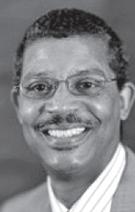
“I’m not too sure, it all happened really fast. A nice greasy, go-to-the-net goal,” Joshua told FoxSports Midwest.
“It was all I expected and then some. To play in the National Hockey League is the biggest honor you can have in the sport of hockey. So, it was an unreal experience to be a part of the club today.”
The Blues honored the NHL tradition of allowing first-game
“It was an amazing experience to get that solo lap and it’s a great group of guys in there and I’m happy I could bring some excitement to the room today,” Joshua said.
Blues head coach Craig Berube praised his on-ice smarts and energy.
“I’m very happy for him and proud for him to come in and get a goal in his first game in the NHL. That’s a huge thing for a young kid like him,” Berube said.
Drafted by the Toronto Maple Leafs in 2014, Joshua played with the Sioux Falls Stampede in the United States Hockey League before starring at Ohio State University four collegiate seasons.
The Blues acquired him a trade with the Maple Leafs in July 2019 and he was playing for the Utica Comets of the American Hockey League

when called up by the Blues. After playing four games, Joshua was demoted but returned to the Blues lineup for Monday’s overtime loss to the San Jose Sharks.
Dak to Dak
St. Louis Blues rookie Dakota Joshua sent greetings to his mother, Jullee, family and friends in Dearborn, Mich., after scoring his first NHL goal in a 5-4 win over the Anaheim Ducks last week.
Of the $160 million, $126 million is guaranteed and the new contract includes both no-trade and no-franchise tag guarantees.
Prescott will receive $66 million in signing bonus money, the most in NFL history. The figure surpasses Seattle Seahawks quarterback Russell Wilson ($65 million) and Green Bay Packers quarterback Aaron Rodgers ($57.5 million). A press conference officially announcing the deal was scheduled for Wednesday (March 10).
The Reid Roundup
It was a big start to March for another guy named Dakota too. Dallas Cowboys quarterback Dak Prescott has reportedly agreed to a long-term contract with the franchise valued at $160 million over four years. Details of the deal include Prescott banking $75 million in 2021 and $126 million over the first three seasons – an average of $42 million per season.
In a nation that can never get enough football, why aren’t any HBCU football games being televised on ESPN or another major outlet? In fact, no games from this unique spring season featuring Division II schools have been on national TV… Les Miles, who allegedly only wanted “blonds” with “big (chests)” working in the football office while at LSU, is out as football
coach at Kansas. His past caught up with him… Maia Chaka will make history when NFL games resume as the first Black woman to serve as an official. She has officiated in both the Pac-12 Conference and Conference USA, and advanced her skills in the NFL’s Officiating Development Program… The site on Mars where the Perseverance rover landed has been renamed after the late Octavia E. Butler, a renowned science fiction author. She was the first Black American woman to win both the Hugo and Nebula awards that honor science fiction, and the first science fiction writer to receive a MacArthur Fellowship. Alvin A. Reid was honored as the 2017 “Best Sports Columnist – Weeklies” in the Missouri Press Association’s Better Newspaper Contest and is a New York Times contributor. He is a panelist on the Nine Network program, Donnybrook, a weekly contributor to “The Charlie Tuna Show” on KFNS and appears monthly on “The Dave Glover Show” on KMOX.

reliable individuals with solid work experience and a clean driving record. Applicants must also pass USDOT physical and drug test, and with ACT assistance, obtain IL CDL B license with air brakes and passenger endorsements. ACT is an Equal Employment Opportunity Employer.
By Taalib Saber Special to The American
Ghana has always been dubbed the “Gateway to Africa,” and rightly so. From its geographical location on the West Coast to its warm greetings from the people, even down to the relatively low instances of civil wars, Ghana has always welcomed those who visit. For people of African descent in America though, Ghana has a special place in our minds and hearts.

In addition to many of us having a direct lineage to Ghana through our bloodlines, Ghana has been at the forefront of “Pan-Africanism,” or the unification of African people throughout the world. In the late 1800s, when colonization throughout Africa was running rampant, Nana Yaa Asantewaa, the fierce Asante warrior and Queen Mother, infamously stated, “If the men of Asante will not go forward, then [the women] will.” And that she did. Asantewaa would lead an estimated 20,000 soldiers in their resistance against British occupation, until her capture in 1896. Kwame Nkrumah, the first president of Ghana, ensured that his nation would be allies and assist with the Black struggle of people of African descent born in the United States. Not only did Nkrumah study in the United States at Lincoln University and University of Pennsylvania in 1930s and 1940s but he also studied the philosophies and teachings of Marcus Garvey and witnessed racism upfront, which helped to develop his ideologies toward blackness, nationalism and Pan-Africanism. Before Ghana’s independence, Africa was projected solely as a dark, inferior, underdeveloped continent. Nkrumah’s presidency helped to change that narrative and cultivate leaders such as Congo’s Patrice Lumumba, Cape Verde and Guinea Bissau’s Amilcar Cabral, and to give confidence and inspiration to African people all over the world.
During his time in power, he invited W.E.B. Du Bois to work on his Encyclopedia Africana, met with Malcolm X several times, hosted Martin Luther King, Jr. at Ghana’s independence celebration, and employed Kwame Ture (nee Stokely Carmichael) and others to work in his administration. Needless to say, he left a tremendous impact on our movements.
As recently as 2019, President Nana Akufo-Addo, during his “Year of Return”

campaign, offered special land deals and an easier pathway to citizenship for Black people who wanted to live in Ghana as a way for us to return to the motherland. Due to the political and social climate of the United States towards Black people, several American citizens, including the Grammy award winning musician Stevie Wonder, have answered the call of the Ghanaian president, electing not to face extrajudicial killings, racism, and second-class citizenship. So, as we approach the 64th year of Ghana’s independence, let us celebrate what this great nation has meant to us historically in our fight for freedom and independence as a collective of African people.
Happy Birthday, Ghana!






St. Louis American Staff
The St. Louis Alumnae Chapter of Delta Sigma Theta Sorority will celebrate its 108th year anniversary and Founders Day weekend with a virtual Ecumenical Service at 11 a.m. on Sunday, March 14.
Guest speaker for the event will be Reverend Dr. Karen Anderson, one of the chapter’s chaplains before relocating to Las Vegas, Nevada.
“The Reverend Dr. Karen Anderson is a member of our Chapter,” said DeJeanette Williams, president of the St. Louis Alumnae Chapter of Delta Sigma Theta. “I am proud of Rev. Anderson on being appointed the first female Senior Pastor of the First A.M.E. Church –Las Vegas. And I am grateful for the technology that will allow her to join us and close out our amazing Founders weekend celebration.”
In January 1913 Delta Sigma Theta Sorority was founded by 22 Black women from Howard University. Their mission was to promote academic excel-

lence; to serve the underserved; educate and stimulate participation in the establishment of public policy and to provide solutions for problems in Black communities. The organization’s mission remains the same and is demonstrated through the leadership of its members’ community service.
The St. Louis Alumnae Chapter was established in 1926 by Founder Madree Penn White and four others. It has more than 400 members. Its service area includes St. Louis
City, St. Louis County and St. Charles County. There are more than 1,000 Delta chapters worldwide.
The ecumenical service is hosted by the St. Louis Alumnae Chapter of Delta Sigma Theta Sorority, Inc. is free and open to all races, cultures, and denominations – all are welcome to attend.
For information on how to join the Zoom webinar on March 14 at 11 a.m., please visit www.dst-sla.org.
By James A. Washington
There are certain Christian principles often talked about in the New Testament, that repeat themselves over and over again. As repetitive as they might be the truth doesn’t ever change and one of those principles happens to be forgiveness.
And we all know, this one is particularly hard to internalize and certainly almost impossible to do. Jesus, time and again, reminds and sometimes admonishes His disciples that although the laws of the Father are crystal clear, God is always receptive to a repentant heart.
“Godly sorrow brings repentance that leads to salvation…” (2 Corinthians 7:10)
I have sometimes heard others refer to the Almighty as a God of another chance, rather than the God of a second chance. And all I have to say about that is hallelujah! I don’t know about you. But I blew my second chance a long time ago. I am told to take heed of the fact that the whole point of Jesus’ crucifixion was to forgive us our sins and thereby free us from the notion that somehow, we could earn our way into God’s good graces. Through Christ’s sacrifice, we have a blood-bought remedy for all that ails us.
“In Him, we have redemption through blood, the forgiveness of sins, in accordance
with the riches of God’s grace that He lavished on us with all wisdom and understanding.”
(Ephesians 1:7)

When you look at it this way, it appears that forgiveness is really a focal point that deserves extra study for those of us who call ourselves Christian. You see even though Jesus fulfilled the promise of the Old Testament, he also brought mercy to a whole new level. It seems to me then that we too have an obligation to conduct ourselves at least in the spirit of this thing called forgiveness.
“…Forgive us our trespasses as we forgive those who trespass against us…”
We must then exhibit mercy and forgiveness in our own lives if we are to exemplify the challenge of living a life based on Christian principles.
“Bear with each other and forgive whatever grievances you may have against one another. Forgive as the Lord forgave you.” (Colossians 3:13)
This is that “turn the other cheek stuff.” And you know
what? It’s hard, extremely hard. We don’t seem to be built not to hold grudges, or, to not seek revenge; you know the “old forgive but never forget game.” It is so much easier to play by the ‘eye for an eye’ rules, isn’t it? I kind of understand Jesus when He said “…Let he who is without sin cast the first stone…” (John 8:7) We often walk around with rocks in our hands as well as in our hearts. It is the true believer who has come to know that life is easier to navigate when we really do unto others as we would have them do unto us. Yes, that’s right. I want to be done by people who will do me correctly. Do me in the name of God. Do me how you want to be done. “Let all bitterness and wrath and anger and clamor and slander be put away from you, along with all malice. Be kind to one another, tenderhearted, forgiving each other, just as God in Christ also has forgiven you.” (Ephesians 4:31-32) We tend to complicate simple things. It can’t get any simpler than this. The road to heaven is traversed by the one who lets the stone fall from his hand. The road to hell is navigated by the one who throws it. May God bless and keep you always.




Radio Arts Foundation (RAF), branded as Classic 107.3, a St. Louis based not-for-profit classical music radio station, is seeking a Sales Professional to join our management team. This is an exceptional opportunity for a mission-minded, self-motivated, and innovative individual to be an integral part of a growing public media organization that is “The Voice for the Arts in St. Louis”. Responsibilities will include securing advertising and sponsorship of proprietary and leased radio programming, as well as RAF events, initiatives and digital products across multimedia platforms; meeting advertising and sponsorship revenue budgets. Candidate should be comfortable and experienced with a 360-degree sales position that includes prospecting, cold calls, needs assessments, proposal creation and presentation to secure the sale, servicing the account and forecasting and reporting results to RAF management. The position reports to RAF’s CEO and General Manager
ST. LOUIS UNIVERSITY HIGH SCHOOL MATH
This is a full-time position in the Math Department. Candidates should have a bachelor’s degree, high school teaching experience, and be able to demonstrate readiness to contribute to St. Louis University High’s rigorous college preparatory curriculum. Master’s degree and state certification preferred.
Interested candidates must submit a cover letter and resume online. Priority will be given to submissions received before April 30, 2021. https://sluh.aaimtrack.com/jobs/
The City of Clayton is hiring for a full-time Plans Examiner. Apply by 3/26/21: https://claytonmo.applicantpro. com/jobs/ EOE

free holistic legal services to low-income residents in Illinois.
We are hiring for the following positions:
• Full and part-time intake specialists
• Accountant
• Case workers • Full and part-time attorneys Interested in applying? Go to lincolnlegal.org/careers/ for information Or email your resume and cover letter indicating the position you are interested in to: hr@lincolnlegal.org EOE

The media sales professional will work closely with the Development Manager to achieve synergistic, long-term revenue, sometimes from shared client relationships. No phone calls. Send cover letter, resume, and three references to: jclare@classic1073.org
Nurses - $70/hr. for Psych, ICU and ER RNs. Immediate & flexible start dates in Centreville, IL. Flexible scheduling available on all shifts. Fully employer-paid medical & dental. Immediate vesting in 401(k) with 6% employer contribution. All nursing backgrounds will be seriously considered. Call Vicki at Worldwide 866 633 3700, x 108.
Affinia Healthcare has immediate openings for the following positions: Medical Assistants, LPNs, RNs and Registration Specialists. You will be assisting current staff in our vaccination clinics or with Covid testing. These positions are currently temporary but may lead to a permanent full time opportunity for the right candidate. For consideration and additional information please apply online at www.affiniahealthcare.org/about/ careers or fax an updated resume to 314.814.8525.
Affinia Healthcare is an Equal Opportunity Employer and a Tobacco and Drug –free workplace. EOE/M/F/Vet/Disabled.
Executive Assistant II – Office of the Vice Chancellor for Operations and Technology Transfer - Job ID #47119 - The executive assistant will provide a wide range of trusted executive support to the Vice Chancellor for Operations and Technology Transfer. Responsibilities will include organizational and administrative support functions and require a high level of attention to detail,
Public Affairs is producing websites that have well-written and sustainable code, are lightweight and perform well on all devices, and follow industry standard best practices. This position will also lead the development of many of the university’s highest profile websites and its guided self-service platform. Central to the success of this

St.
at St. Louis Community College at Florissant Valley Campus, until 2:00 p.m. local time Tuesday March 23, 2021 Bids will be publicly opened and read aloud at the office of the Manager of Engineering and Design, 5464 Highland Park, St. Louis, MO 631101314. Specifications and bid forms may be obtained from the Manager’s office, at the above address or by calling (314) 644-9770. An Equal Opportunity and Affirmative Action Employer
REQUEST FOR PROPOSALS FOR MARKET ANALYSIS, URBAN PLANNING & DESIGN SERVICES
Spanish Lake Community Development Corporation (SLCDC) seeks proposals from qualified firms to provide market analysis, urban planning and design services related to the Bellefontaine Corridor Study adopted by the St. Louis County Council. To be considered, proposals must be received no later than 5:00 PM CST on Friday, March 19, 2021. For the complete RFP and/or questions, please contact Angela Pinex at angela@spanishlakecdc.org
REQUEST FOR QUALIFICATIONS for PROFESSIONAL SERVICES FOR TESTING AND INSPECTION OF MATERIALS FOR PROJECTS AT ST. LOUIS LAMBERT INTERNATIONAL AIRPORT.
Advantes Construction, LLC, is seeking qualified small, disadvantaged, minority, and women’s businesses for the Paincourt Lofts redevelopment project. Opportunities include, but are not limited to, demolition, concrete, masonry, carpentry, doors, windows, roofing, finishes, plumbing, HVAC, electrical, drywall, flooring, painting, signage. All negotiations must be complete by bid opening date of March 15, 2021 @ 10:00AM. A copy of current SBE/DBE/ MBE/WBE certification must accompany any written proposal or quotation, as well as bidder’s MBE/WBE status with the City of St. Louis. For plans and bid documents, email company and contact name to bwright@advantesgrp.com.
Notice is hereby given that The Metropolitan St. Louis Sewer District (District) will receive sealed bids for Park Drive Sanitary Relief (Engelholm Avenue) Phase II under Letting No. 13375-015.1, at this office, 2350 Market Street, St. Louis, Missouri 63103, until 02:00 PM on Tuesday, April 13, 2021
The Clean Energy Development Board of the City of St. Louis will receive sealed proposals for Administrator Services for the Set the PACE (Property Assessed Clean Energy) St. Louis Program. The scope of work includes general program management, marketing, tracking and reporting of program performance, and to ensure PACE project compliance with all applicable local, state, and federal laws.
Proposals will be received until 5:00 PM on March 31, 2021 at 1520 Market Street, Suite 2000, St. Louis, MO 63103.
The complete Request for Proposal is at https://www.stlouis-mo.gov/ government/departments/sldc/documents/ request-for-proposals-foradministration-services.cfm
The expected contract start date for the successful respondent is July 1, 2021.
Respondents must take affirmative action to ensure that employees & applicants for employment are not discriminated against because of their race, sex, marital status, color, age, religion, sexual orientation, familial status, disability, national origin, or ancestry.

Notice To Small (SBE), Disadvantaged (DBE), Minority (MBE), Women’s (WBE), Service Disabled Veteran Owned (SDVOB) & Veteran Owned (VOB) Businesses Advertisement River City Construction, L.L.C., 6640 American Setter Drive, Ashland, Missouri 65010, (573) 657-7380 (Phone) (573) 657-7381 (Fax) Is Seeking Qualified Small, Disadvantaged, Minority, Women’s, Service Disabled Veteran Owned & Veteran Owned Businesses For The University of Missouri – Missouri Psychiatric Center – Infrastructure Upgrades Serving Level 1 (CP210251; Missouri Psychiatric Center – Renovate 1N
fire suppression, HVAC, electrical, electronic safety. All interested and qualified SBE, DBE, WBE, SDVOB, AND VOB businesses should contact, in writing, (certified letter, return receipt requested) Jason Brown or Joe Seymour to discuss the subcontracting opportunities. All negotiations must be completed prior to the bid opening date 3/30/2021 @ 1:30 P.M. Proposals will be evaluated in order on the basis of low responsive bid received. CERTIFICATION OF DBE/WBE/MBE/SDVOB/VOB STATUS
Jefferson Franklin Community Action Corporation’s Weatherization program is soliciting sealed bids for the following in Jefferson and Franklin County, Missouri:
1) Contract to provide insulation, air sealing, and carpentry work between July 1, 2021-June 30, 2022 with a yearly renewal option of up to two years.
2) Contract to provide heating, ventilation, air conditioning, and water heater service between July 1, 2021-June 30, 2022 with a yearly renewal option of up to two years.
Paric Corporation is seeking proposals for the following project: 100 North Broadway
This is a renovation of the exterior envelope and interior renovations.
The scope of work includes but is not limited to Landscaping, Concrete, Masonry, Waterproofing, Air/Vapor Barrier, Flooring, Painting, Waterproofing, Earthwork, Mechanical , Electrical and Site Utilities.
This project has a diversity participation goal of 20% MBE and 8% combined WBE, DBE.
Bids will be received only from companies that are pre-qualified by the District’s Engineering Department for: Sewer Construction Cities of Pagedale, Greendale, and Normandy Drain Layers License Required Plans and Specifications are available for free electronic download. Please go to MSD’s website and look for a link to “ELECTRONIC PLANROOM.” Plans and Specifications are also available for viewing or purchase at Cross Rhodes Reprographics located at 2731 S. Jefferson Avenue, St. Louis, MO 63118 or at www.stlmsdplanroom.com. All bidders must obtain a set of plans and specifications in order to submit a bid in the name of the entity submitting the bid. The Metropolitan St. Louis Sewer District is an Equal Opportunity Employer.
Request bid packets or information at P.O. Box 920, Hillsboro, MO 63050, or e-mail wx@jfcac.org, or call (636)789-2686 option 2. A virtual pre-bid meeting will be held on-line, April 15th 9:00am, e-mail for access. Small, minority and women owned businesses are encouraged to apply.
Mailing of Bid packets begins April 1, 2021 with a bid deadline, April 29, 2021 at 2:00pm.
Jefferson Franklin Community Action Corporation (JFCAC) reserves the right to reject any and all bids, in whole and in part.
Statements of Qualifications due by 5:00 PM CT, MARCH 24, 2021 at Board of Public Service, 1200 Market, Room 301 City Hall, St. Louis, MO 63103. RFQ may be obtained from BPS website www.stl-bps.org, under On Line Plan Room-Plan Room, or call Board of Public Service at 314-589-6214. 25% & 5% MBE/WBE participation goal. www.stlamerican.com
Weatherization is funded with 75% Federal funds, or $810,484 and 25% private funds, or $270,162 and partially administered by the Missouri Department of Natural Resources/ Division of Energy. JFCAC is an Equal Opportunity Agency.
The City of St. Louis is soliciting comments on its draft Consolidated Annual Performance and Evaluation Report (CAPER). The CAPER is an overall review of the housing and community development activities undertaken in 2020 by the City of St. Louis. It is part of the Consolidated Planning process, which is a pre-requisite to receiving funding allocations from the U.S. Department of Housing and Urban Development (HUD) for the following programs: Community Development Block Grant, HOME Investment Partnerships, Emergency Solutions Grant, and Housing Opportunities for Persons with AIDS.
Virtual Public Hearing Notice/Public Comment Period
TThe Community Development Administration will conduct a virtual public hearing on Tuesday, March 30, 2021 at 1:00 p.m. The purpose of this hearing is to solicit public comments pertaining to the 2020 CAPER prior to its submission to HUD. Instructions for attending the Virtual Public Hearing are available on the CDA website: https://www.stlouis-mo.gov/cda /
Available for Review
The 2020 CAPER will be available in draft form for review by any interested citizen prior to submission to the U.S. Department of Housing and Urban Development on March 16, 2021 through the City of St. Louis Community Development Administration website http://www.stlouis-mo.gov/cda/
The draft report, including IDIS reports and the Financial Summary, will also be available for review at the offices of the Community Development Administration located at 1520 Market Street, Suite 2000, St. Louis, MO 63103 and the City of St. Louis Central Library, located at 1301 Olive Street.
Written Comments
The views of citizens, public agencies, and other interested parties are encouraged. Written comments with respect to the proposed 2020 CAPER will be accepted via email until 5pm on March 30, 2021 and should be directed vial email at CDBG@stlouis-mo.gov
Notice
Bids for this project are due on March 25th at 10:00 a.m. For any questions or would like to find out more detailed information on this opportunity, please contact Matt Davis at 314-307-4214, msdavis@paric.com or John Davis at 314-704-6075 jcdavis@paric.com
All bids should be delivered to Paric via e-mail (bids@ paric.com) or fax (816-878-6249).
PARIC CORPORATION IS AN EQUAL OPPORTUNITY EMPLOYER
B i d s f o r C h i l l e r P l a n t Improvements, Environmental Control Center, P r o j e c t N o . O2114-01, will be received by FMDC, State of MO, UNTIL 1:30 PM, 3/25/2021 via MissouriBUYS. Bidders must be registered to bid.For specific project information and ordering plans, go to: http://oa.mo. gov/facilities
The Dome at America’s Center is seeking bids from qualified companies to install four VFDs; four (4) 60-HP motors; BAS interface and automation on existing cooling towers. Interested bidders must attend a pre-bid on-site walk-thru of project. Contact bsmith@explorestlouis.com for scope of work and to schedule walk thru. Quotes due April 5, 2021. The facility reserves the right to reject any and all bids. EOE
PUBLISHER’S NOTICE:
Advertised herein is subject to the Federal Fair Housing Act, which makes it illegal to advertise any preference, imitation, or discrimination because of race, color, religion, sex, handicap, familial\status, or national origin, or intention to make any such preference, limitation, or discrimination.“We will not knowingly accept any advertising for real estate which is in violation of the law. All persons are hereby informed that all dwellings advertised are available on an equal opportunity basis.” Call Angelita Houston at 314-289-5430 or email ahouston@stlamerican.com to place your ads today!
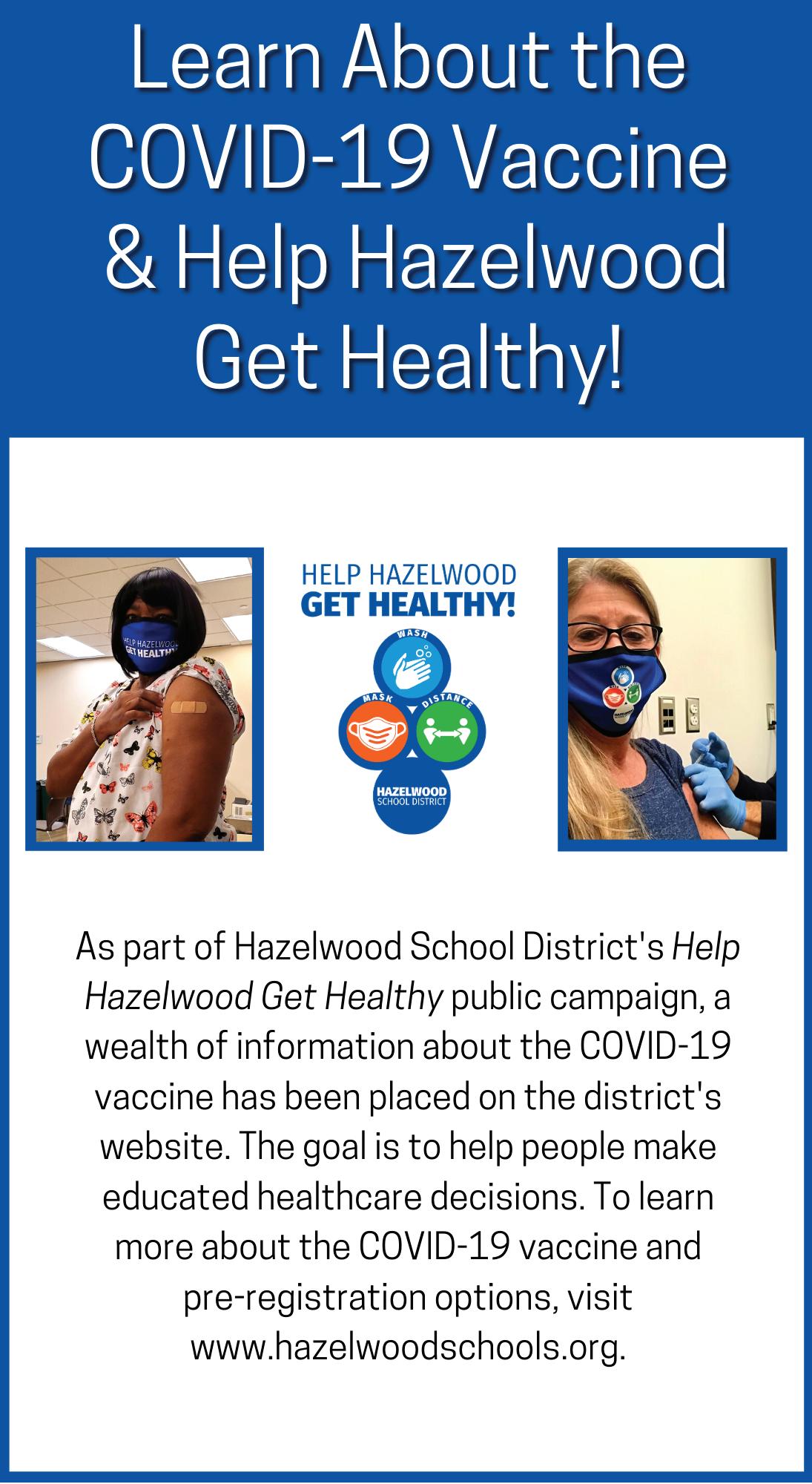


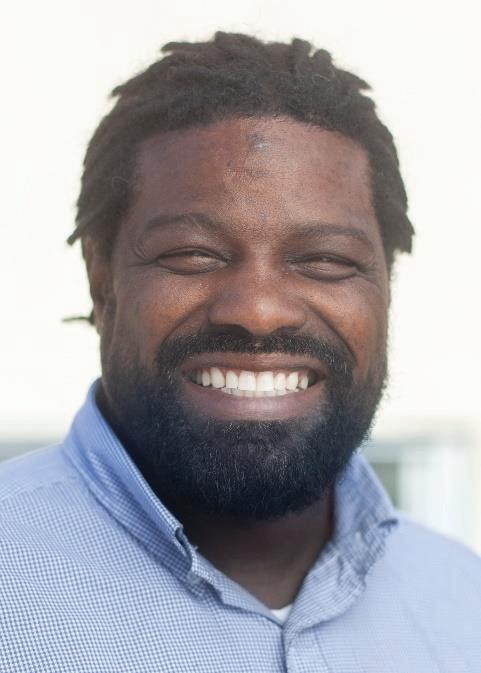
more on behalf of 314 Day and the foundation,” Evans said. In St. Louis, 314 Day has grown tremendously since its introduction and is now trademarked, thanks to Evans owning its name and title.
Evans, now a veteran serial entrepreneur, has been splitting his time between Atlanta and Houston for almost a year.
He may have relocated from St. Louis, but he still is very committed to pushing the efforts of 314 Day and its foundation.
He is already forward-thinking about the future of his creation. He envisions the concept of a new ‘Meet Me in St. Louis,’ where out-of-towners can patronize numerous businesses ingrained in the city’s culture.
“The point is for St. Louis to thrive, grow and give everyone an outlet to celebrate our culture together,” said Evans.
Although he has been relatively lowkey these past couple of years, Evans wants people to know he’s back and to get used to seeing his face again.
“I know ‘Dip’ been off the scene for a minute, I had to step back and regroup,” Evans said. “I knew mentally I had to be prepared and ready for this journey I have planned with the 314-day brand and the ‘Young Dip’ brand.”
Evans is a 2002 graduate of Beaumont High School.
After high school, he enrolled in college courses at St. Louis Community College-Florissant Valley and interned at the campus radio station while there.
His involvement at the station led to having his own show at WHHL’s Hot 104.1 hip-hop. After working there, he began a new career path working in aviation as a ramp manager. He relocated due to his previous profession and now is a multifaceted entrepreneur with

his hand in hosting, promoting, as a club owner, and as an artist manager. He is still involved with radio and television work and is venturing into acting. To stay up to date on all things 314 Day-related, visit the



